Samsung Q7F is the cheapest model from the manufacturer in the QLED line, and it must be admitted that several advantages can easily be pointed out. After calibration, the colors look really good, and the additional QLED filter makes the hues more saturated than in typical budget LCD TVs. In addition, there is a VA panel that offers quite decent native contrast. It is certainly not at the level of top constructions, but it does fine for everyday viewing. The biggest plus, however, is the Tizen system, which is Samsung's flagship card. It runs smoothly, is well-developed, provides access to a plethora of applications and add-ons, and at the same time allows you to easily connect the TV to the SmartThings ecosystem and control other devices in the home. And this is basically where the list of pros ends, because the longer you use the Q7F, the more it becomes clear that it is a heavily unfinished product. It is not just about the panel itself with its low brightness and mediocre picture quality in HDR films, but also about the lack of features that usually worked flawlessly in Samsung TVs. The manufacturer claims the presence of VRR and HGiG, but in practice, they are of no use, which makes it difficult to recommend the TV even to casual gamers. It also doesn't perform very well for regular television, as the digital image processing is at best average, and the tonal transition improvement feature, which usually performed excellently in Samsung TVs, here practically does not work. The Q7F is a product that can only be recommended to those looking for a TV with two phrases on the box: “QLED” and “good Smart TV”. The rest receive a rather bland product that lacks a lot to compete even with other more budget-friendly offerings. It is a shame because usually the word "QLED" in Samsung meant something more than just an ordinary TV.
- Matching (Score)
- Our verdict
- TV appearance
- Where to buy
- Contrast and black detail
- HDR effect quality
- Factory color reproduction
- Color reproduction after calibration
- Smoothness of tonal transitions
- Image scaling and smoothness of tonal transitions
- Blur and motion smoothness
- Console compatibility and gaming features
- Input lag
- Compatibility with PC
- Viewing angles
- TV efficiency during daytime
- Details about the matrix
- TV features
- Apps
- Playing files from USB
- Sound
Samsung Q7F vs Samsung Q8F
Direct compare
Check the best price offer:
Samsung Q7FCheck the best price offer:
Samsung Q8F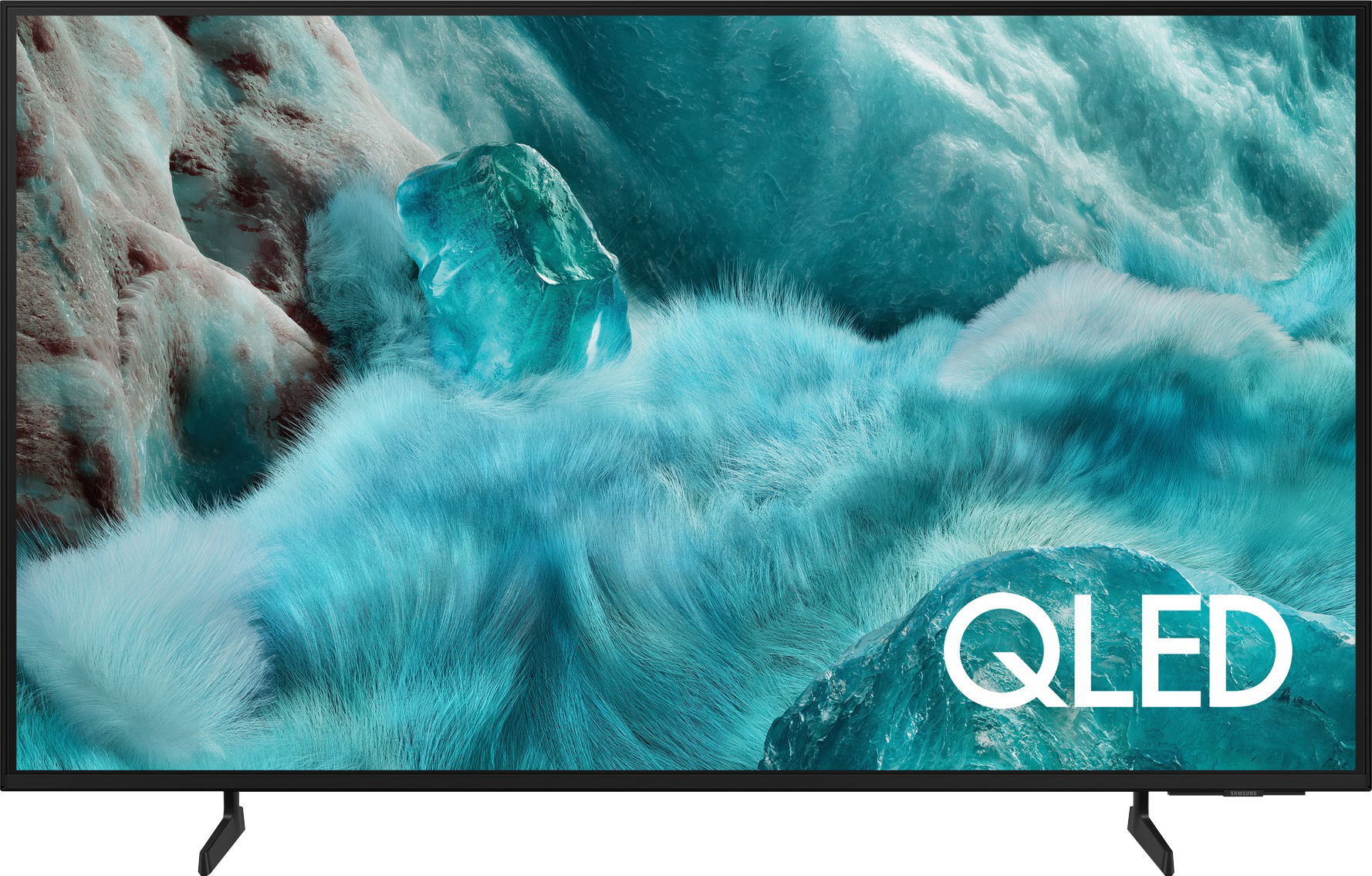
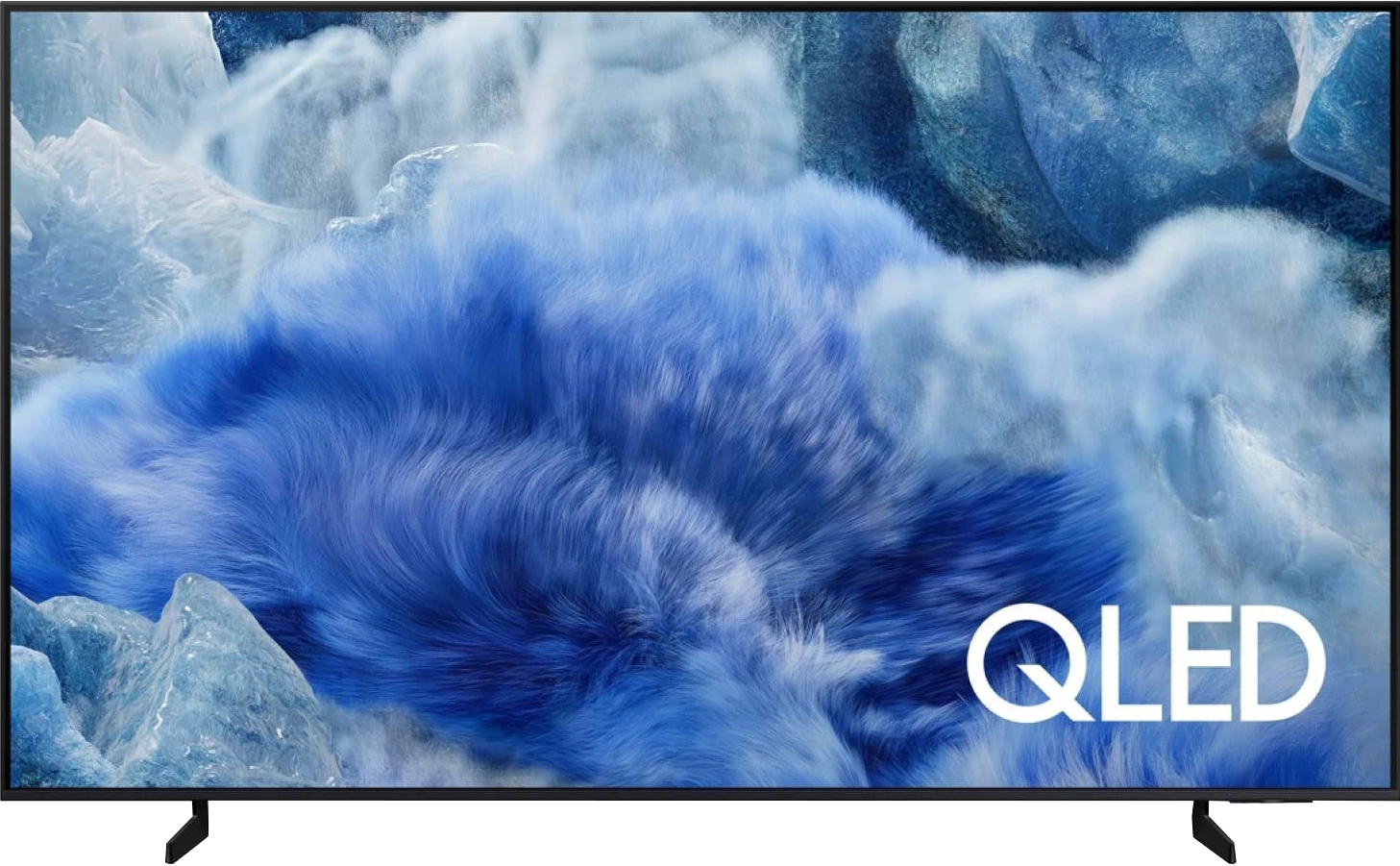
Panel type: LCD VA
Resolution: 3840x2160
System: Tizen
Model year: 2025
Complete the survey to find out the result

Panel type: LCD VA
Resolution: 3840x2160
System: Tizen
Model year: 2025
Complete the survey to find out the result

Overall rating
5.7
6.3
Movies and series in UHD quality
5.7
6.3
Classic TV, YouTube
5.6
6.0
Sports broadcasts (TV and apps)
4.8
5.1
Gaming on console
6.1
6.9
TV as a computer monitor
6.0
6.0
Watching in bright light
3.9
5.6
Utility functions
7.3
7.3
Apps
8.7
8.7
Sound quality
5.8
6.0
Complete the survey to find out what fits your preferences
Advantages
Solid native contrast (VA Panel)
Vivid colors thanks to the QLED filter
Low input lag (around 10MS)
Advanced and smooth Tizen operating system
Small sleek pilot with Type-C charging
Solid contrast thanks to the VA panel
Pretty good brightness in SDR and HDR (up to about 500 nits)
Satin finish handles reflections well
Tizen operating system – fast, intuitive, with a rich selection of apps
Solar remote with USB-C charging
Integration with the SmartThings ecosystem
Great input lag
Good font readability when working with a PC, suitable as a monitor for text work
Adjustable stand on multiple planes
Disadvantages
Very low brightness (only 250 nits in HDR)
Lack of many features for gamers, including VRR and HGiG – the manufacturer promised something, but ultimately these features are simply not there
Lack of many classic "TV" features, e.g., USB recording or PIP
No Dolby Vision
Average quality of digital image processing
Heavily limited features for gamers (no VRR in practice, no HGiG)*,
No recording function on USB or PiP
Average digital image processing
*We hope that the promises made in the advertising brochures will be quickly fulfilled through software updates.
Our verdict
Samsung Q8F is quite a successful continuation of the Q67D model. It offers similar picture quality in HDR content, and with a brightness of around 500 nits, it can create an effect that is hard to call average. It is also aided by support for the HDR10+ format, which has been realistically competing with Dolby Vision for some time and provides comparable experiences in many productions. The contrast is also a plus—given its VA panel, it performs solidly and allows for pleasant blacks in movies and series. However, the biggest advantage of the Q8F remains the operating system. Tizen works quickly, provides access to many applications, and integrates well with the SmartThings ecosystem, making it easy to connect the television to a larger network of home devices. Interestingly, the Q8F also has some niche use—thanks to its very good font readability, it works great as a screen for text work. Additionally, the adjustable stand allows the TV to be positioned on practically any desk or narrower TV cabinet. The biggest drawback, in our opinion, is not the image quality itself—because in this price range it's hard to expect miracles—but rather what has happened to the features for gamers. Through updates, options such as VRR and HGiG, which were available even in simpler designs in previous generations, have disappeared. In fact, the manufacturer even boasts about the availability of these features in its catalog. This makes it difficult to recommend the Q8F to anyone planning to hook up a console and expecting full support for new technologies. Thus, the Q8F is a TV that can please—primarily with its design, above-average picture quality, and efficient Tizen system. But at the same time, it shows a step back compared to its predecessor. Let’s hope that Samsung can quickly rectify these shortcomings, as otherwise, even such a successful “everyday” TV may leave some users feeling unsatisfied.
TV appearance
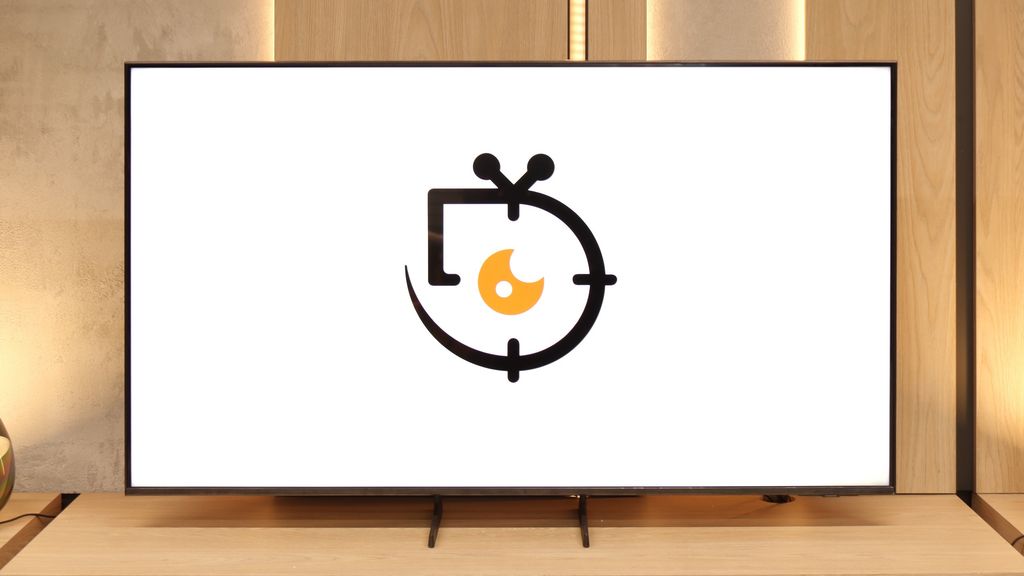
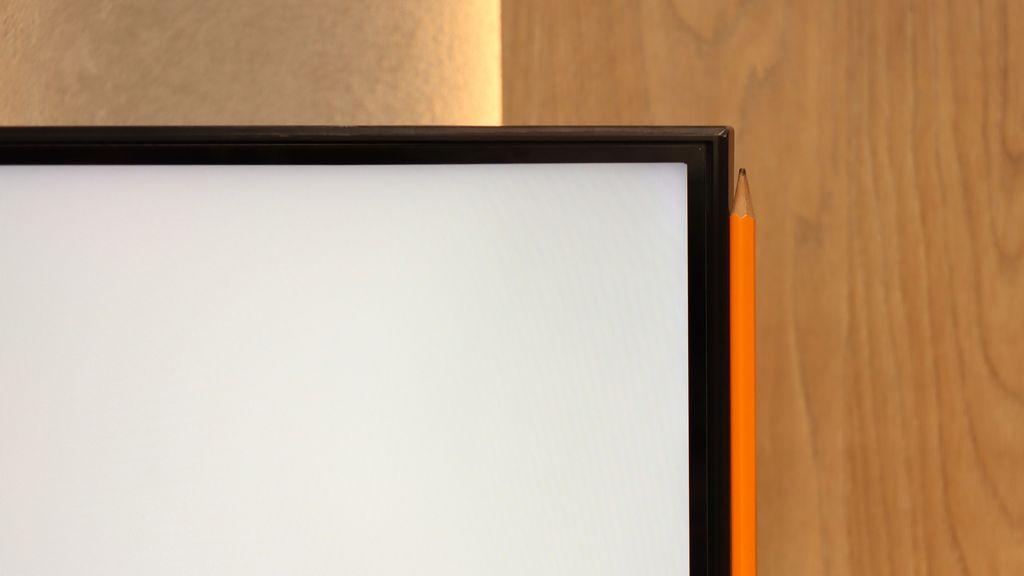
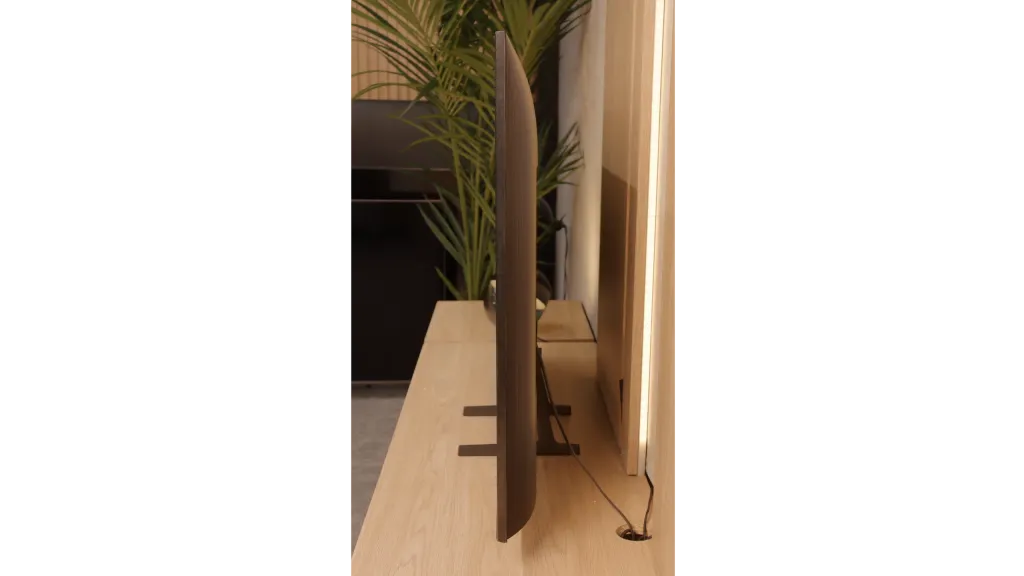
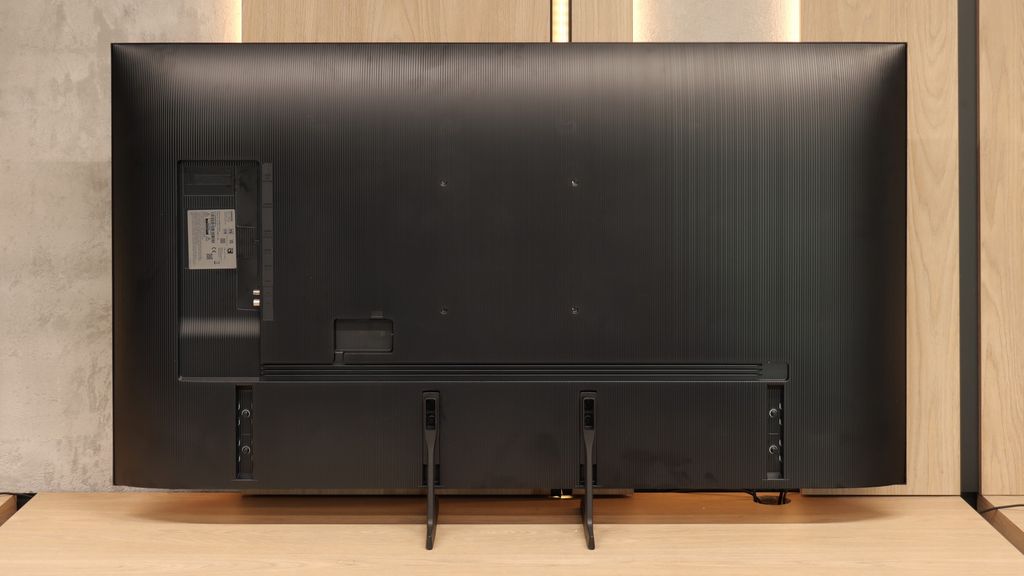
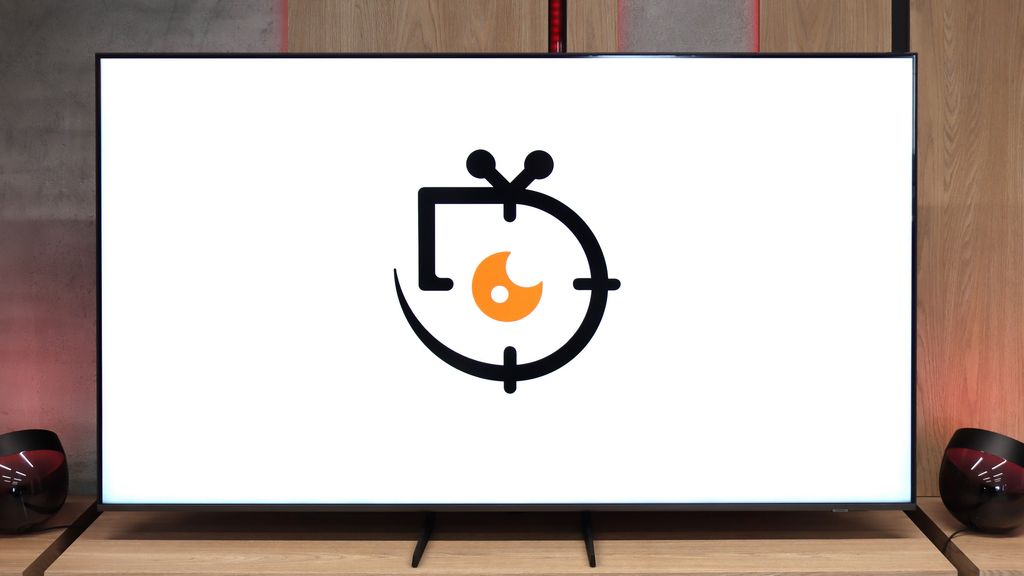
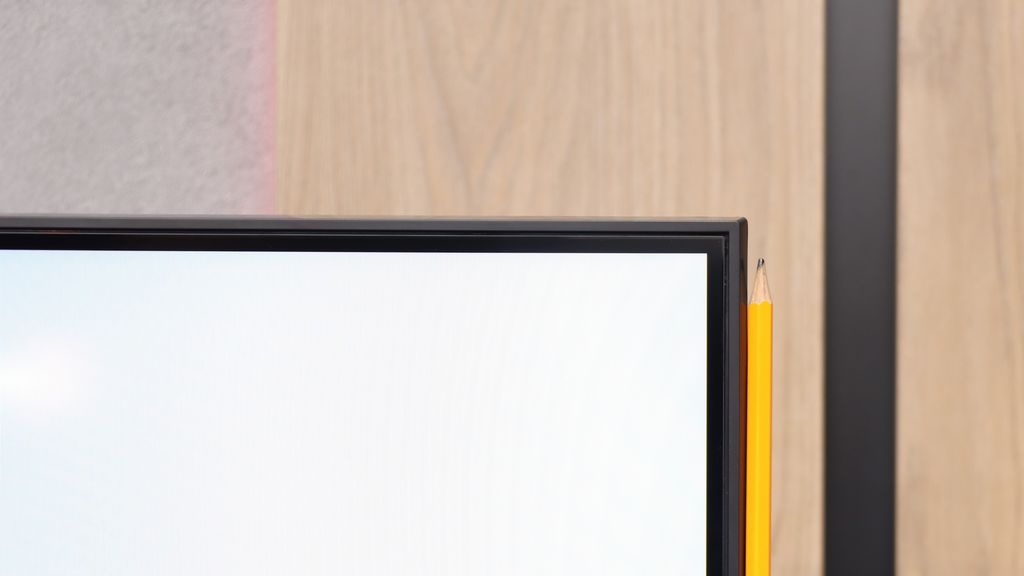
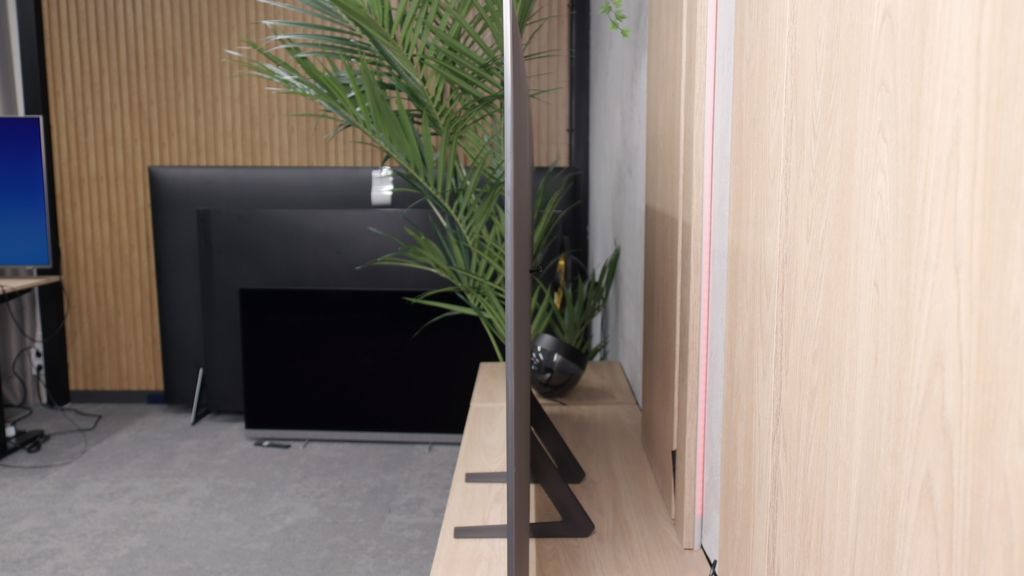
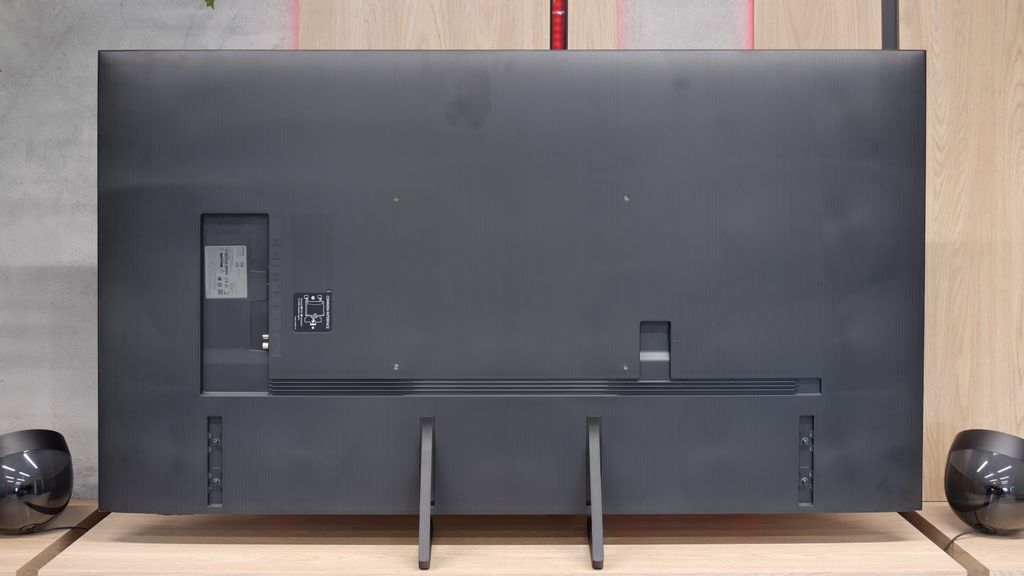
Contrast and black detail
4.7/10
5.5/10
Local dimming function: No
Local dimming function: No
Contrast:

Result
2,850:1

Result
2,750:1

Result
3,300:1

Result
3,050:1

Result
2,750:1

Result
5,200:1

Result
4,650:1

Result
3,650:1

Result
4,100:1

Result
4,150:1
Halo effect and black detail visibility:
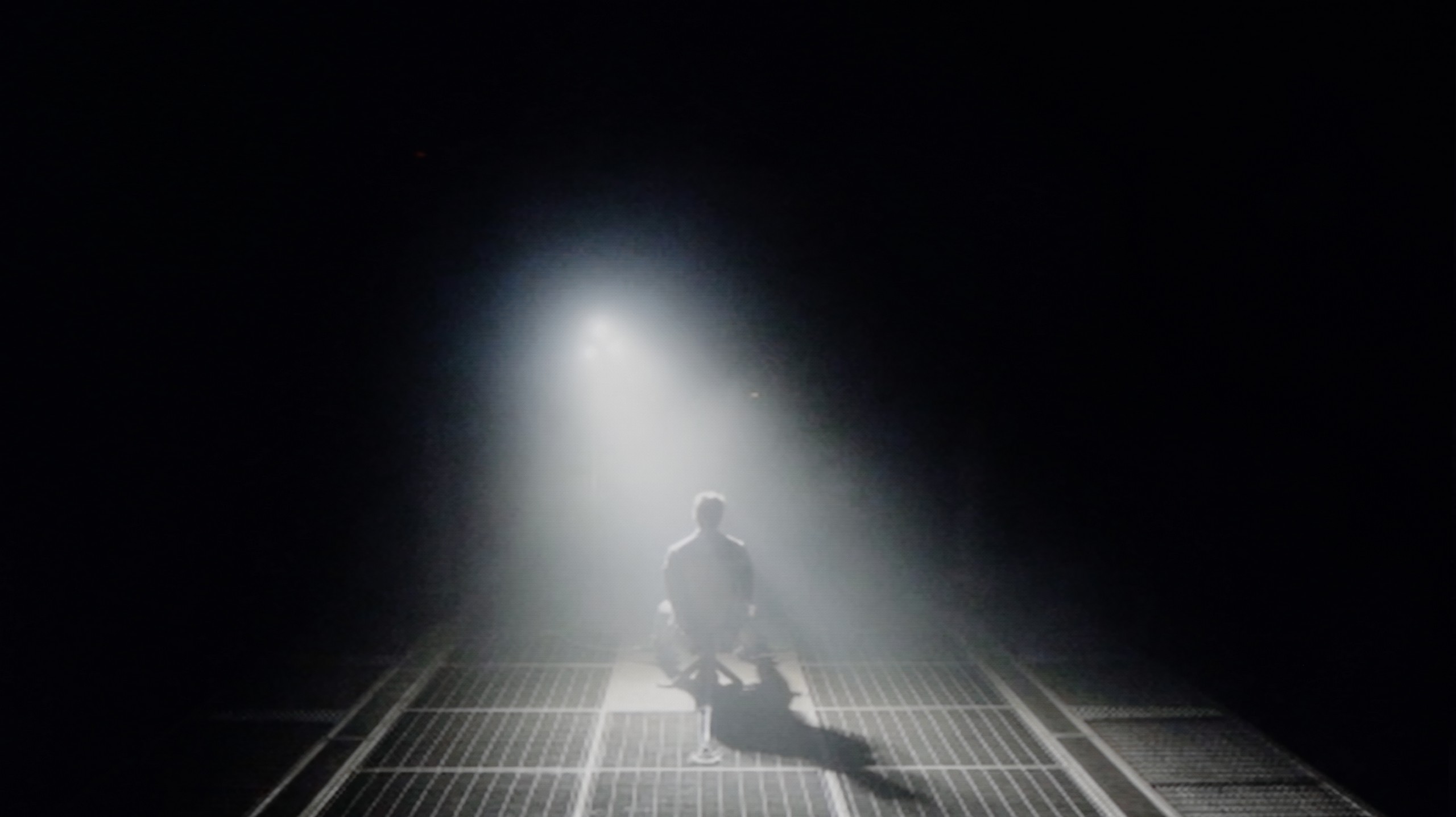
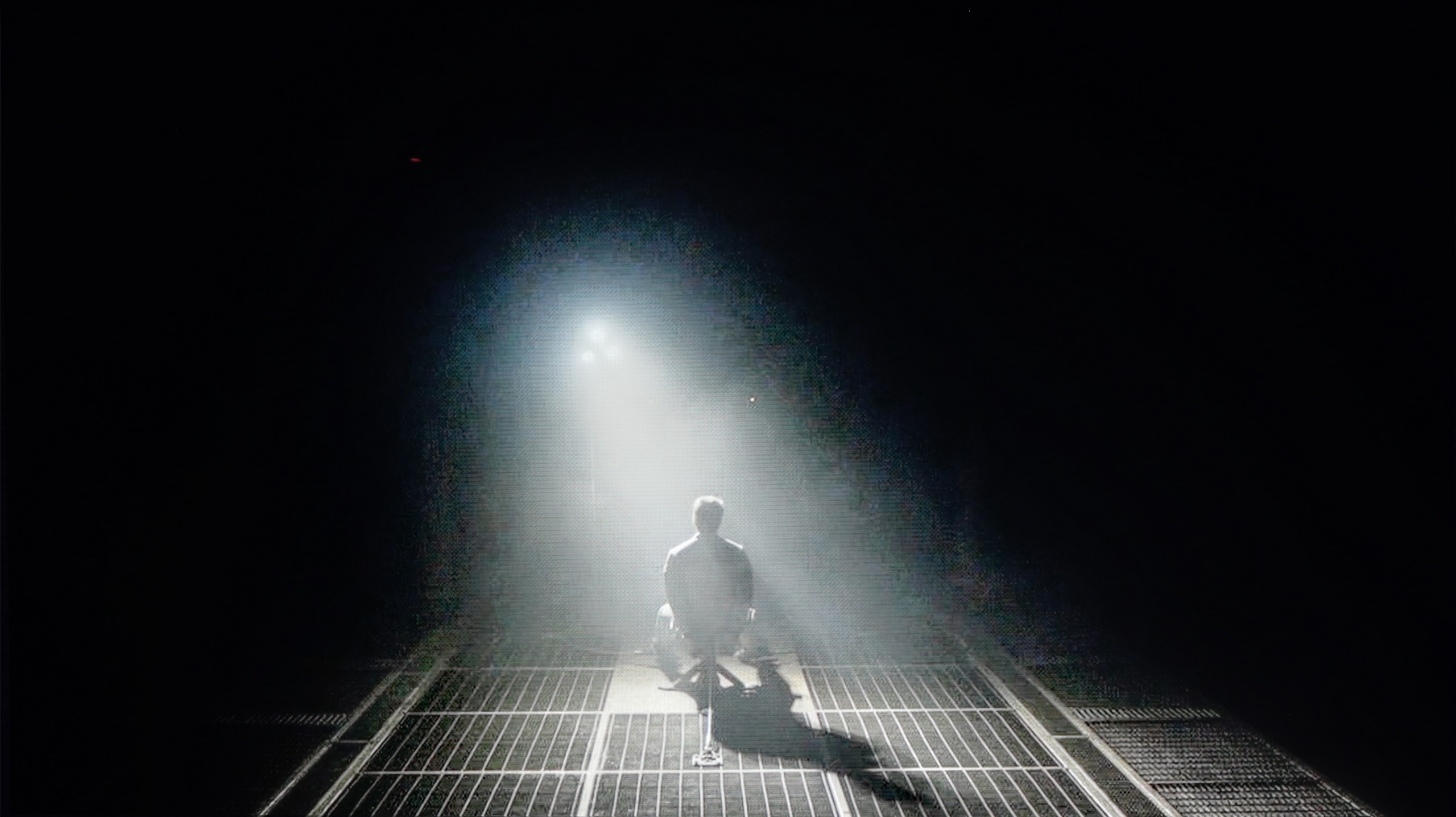
The Samsung Q7F in the tested size of 55 inches has a VA panel, which immediately translates to decent native contrast. Values around 3000:1 may not be record-breaking, as we know that VA panels are currently being produced with more than double the contrast, but it still performs much better than IPS or ADS panels, where blacks quickly fade into shades of gray or navy blue. Unfortunately, we won't find typical local dimming zones here, but the manufacturer has added something resembling global dimming – meaning the whole screen darkens in relation to the content. The effect? In most scenes, blacks look quite solid, although during night screenings, we can still see that they resemble dark navy blue or gray rather than true pitch black. Overall, it's okay, but without fireworks – it's not spectacular, but it's also not a disaster.
Samsung Q8F uses an LCD VA panel, which immediately puts it in a good position in terms of contrast. By nature, such panels offer deeper blacks than IPS panels, and you can really see this effect here. On test patterns, the contrast maintained a range of about 4000:1 to even 6000:1, which in practice results in a surprisingly engaging picture, especially in a slightly dimmed living room. Of course, this is not the level of LCD screens with local dimming, let alone OLEDs — sometimes the black can shift to a shade of navy blue, and the overall image seems flattened. However, Samsung employs a simple trick: the so-called global dimming, which means dimming the entire screen when a lot of dark areas appear on it. The effect can be impressive but comes at the cost of losing some detail, which may not appeal to everyone. Despite this, the Q8F still presents itself significantly better than televisions with IPS panels, offering solid contrast and blacks that can draw you into the cinematic atmosphere.
HDR effect quality
3.7/10
5.2/10
Luminance measurements in HDR:

Result
215 nit

Result
225 nit

Result
267 nit

Result
113 nit

Result
250 nit

Result
473 nit

Result
417 nit

Result
457 nit

Result
210 nit

Result
471 nit
Scene from the movie “Pan” (about 2800 nits)


Scene from the movie “Billy Lynn” (about 1100 nits)


Static HDR10


Dynamic: HDR10+
Dynamic: HDR10+


HDR luminance chart:
Samsung Q8F
HDR luminance
Samsung Q7F
HDR luminance
Unfortunately, the Samsung Q7F is not one of the bright televisions, and this directly affects the quality of HDR movies. The peak brightness of the panel is only about 250 nits, which is definitely too low to speak of true cinematic experiences. In practice, the image in HDR content does not differ significantly from classic SDR, making it hard to talk about any "wow effect" that usually accompanies us while watching such films. During testing movie scenes, the image simply looked dim, and brightness almost invariably hovered around the mentioned 250 nits. The worst performance was observed in shots with small, intensely glowing elements – the applied global dimming technique reacted very aggressively, dimming the entire screen to maintain the black effect. On the plus side, it is worth noting the presence of a QLED coating that expands the color palette. As a budget QLED model, the Q7F performs quite decently here: its DCI-P3 color coverage is about 93%, and BT.2020 reaches 70%. This means that colors, despite the low brightness, can look quite vivid and attractive.
In terms of brightness, the Samsung Q8F performs surprisingly well for a television without local dimming. It measures up to 500 nits, which practically means that most movie and series scenes look pleasant, and it definitely cannot be accused of lacking the "HDR effect." In films like Life of Pi or The Meg, the screen was able to glow and deliver light effects at a satisfying level. It struggles more during challenging moments—with dark frames containing single bright points. The global dimming used causes the television to darken the image to maintain deep blacks, but at the cost of detail brightness. This is clearly visible in the scene from Sicario 2, where the helicopter lights dropped to around 200 nits. This is a conscious design decision that gives the impression of deeper blacks but somewhat takes away from the brilliance of individual elements, and this should simply be kept in mind. When it comes to color reproduction, the Q8F utilizes quantum dot technology, which broadens the color range. A DCI-P3 coverage of 91% can be considered a decent result, although it is not a record-breaking achievement compared to other QLEDs.
Factory color reproduction
5/10
4.6/10


Factory Mode
After calibration
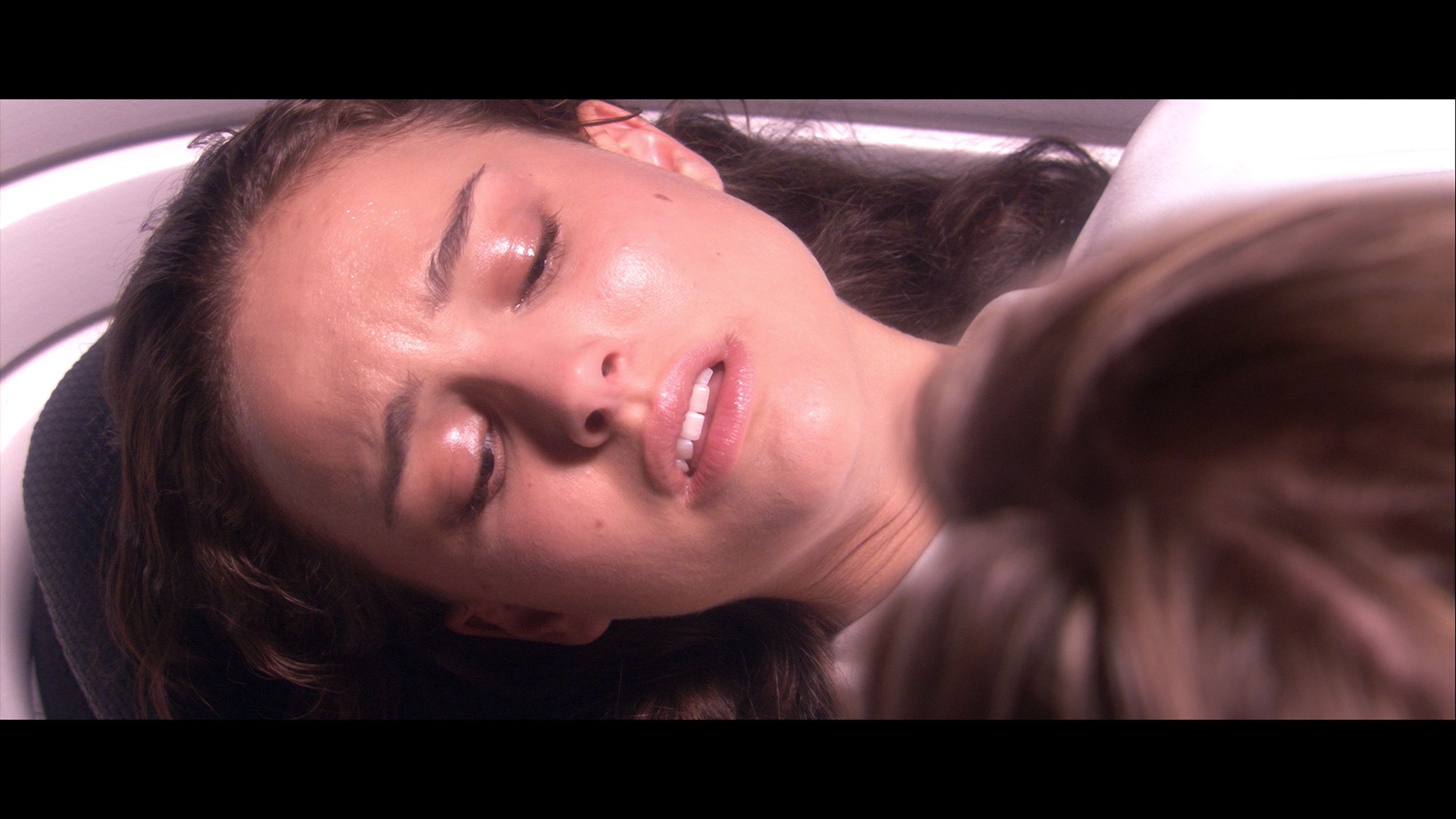
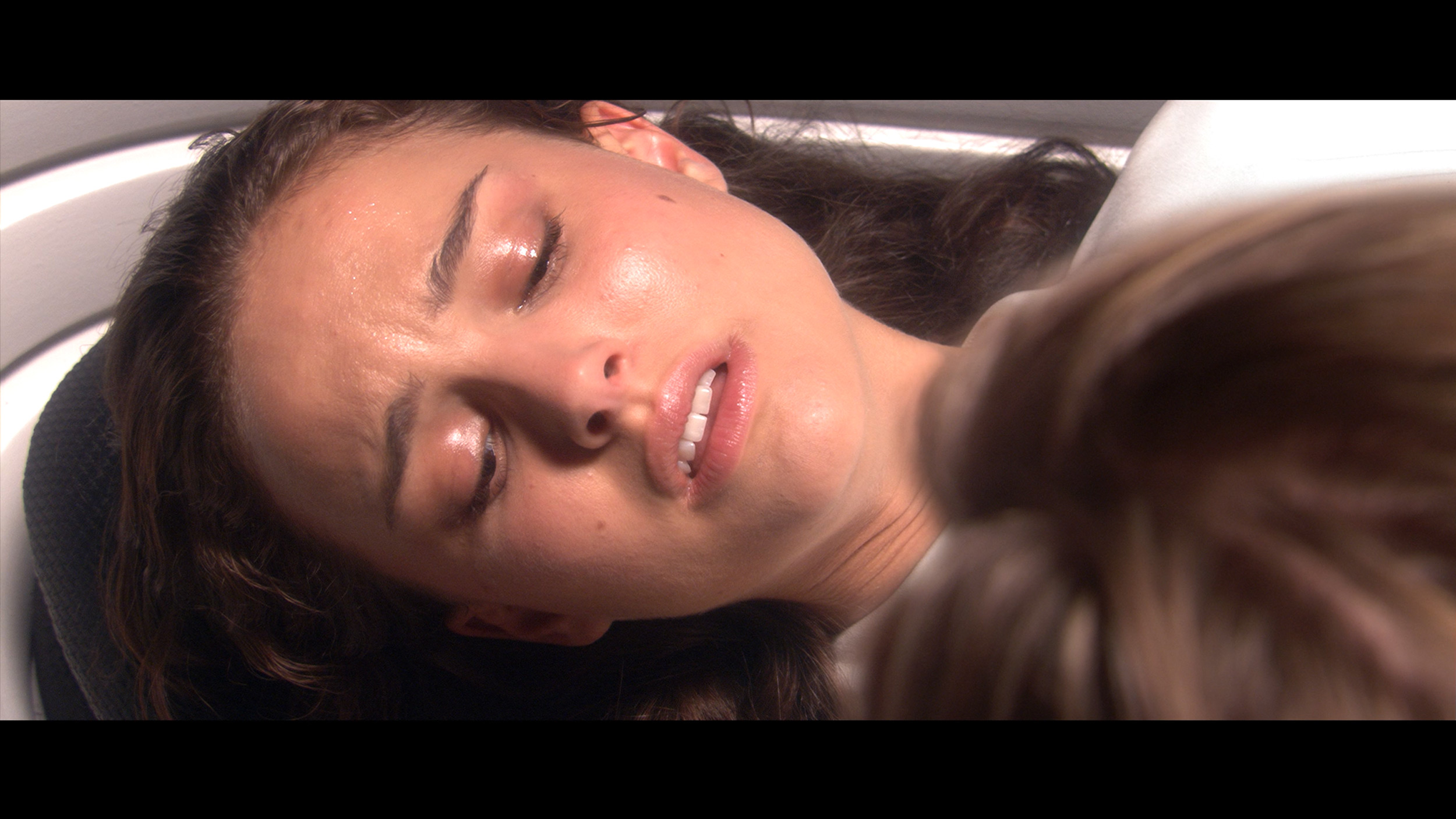
Factory Mode
After calibration
The factory color reproduction in the Samsung Q7F definitely isn't one of its strong points. In Filmmaker mode, which theoretically should be closest to neutral, the white balance issue is immediately noticeable. There's too much red on the screen, while blue is noticeably lacking. The effects of this are very easy to see – white, instead of being neutral, takes on warm, almost slightly orange tones. Over time, this makes the entire image look somewhat unnatural, and bright areas of the scene can seem unrealistic. The problems become even more apparent in HDR content. The graphs show that the TV has significant errors in the Color Checker palette, which translates to visible inaccuracies in the real image. In practice, this means that colors are not presented as they should be. The Q7F also heavily manipulates brightness; darker elements are overly boosted, causing them to lose their cinematic feel, while bright parts can appear dimmed. As a result, the image seems flattened, and instead of helping to bring out details, contrast only highlights its own limitations. This is particularly frustrating in HDR materials, as every detail matters there. In scenes where a subtle play of light and shadow should be felt, the Q7F either overdoes the brightening or, conversely, suppresses elements that were meant to draw the eye. This causes the image to lose its depth, and instead of cinematic realism, we get more of a simplification effect.
We decided to check the Filmmaker mode because it provided us with the best picture right out of the box. However, this does not mean it was perfect. The white balance had too much blue and red tint, causing the white to take on a slight purple-pink hue. Such an imbalance affected the visibility of practically all colors, as can be seen in the comparison photo below. The brightness characteristic in SDR content was quite well adjusted, although in HDR materials, we noticed that the television did not always manage its global dimming—at times, the screen was too dim, while at other times it suddenly brightened. Fortunately, issues related to colors can be effectively corrected with calibration tools, so we decided to get to work.
Color reproduction after calibration
7.6/10
7.8/10




After professional calibration, we managed to bring the Q7F in order – at least in terms of SDR content. The picture in this mode looks really good: the white balance has been set correctly, the colors appear natural, and errors in the color palette have dropped to values that are practically invisible to the eye. The gamma behaves excellently, and the only minor drawback is a slight brightening of smaller elements, which results from the lack of local dimming. For everyday TV watching or standard quality films, the Q7F performs surprisingly well.
It was much more difficult to tame HDR content. Despite adjusting the white balance, the television continues to manipulate brightness significantly, causing scenes to sometimes look unnatural – what was meant to be subtly darker can end up being overly brightened, and bright parts of the image sometimes appear dull. The final effect is better than in the factory settings, but it is evident that the design limitations of the Q7F do not allow for fully utilizing the potential of HDR materials.
After calibration, we managed to correct the white balance almost to perfection. Older SDR content looks stunning — most errors are within a threshold of 2, which is definitely below the human eye's perception limit. In HDR, we also brought the white balance to the correct level, but a different problem arises here. So why are there still relatively large errors in color reproduction? This is mainly due to the limited color palette and the way the television manages brightness. The applied global dimming technique does not give the user control in the settings, so when analyzing the EOTF curve in HDR films, it is clear that the Q8F can independently modify luminance. This can be considered a certain limitation, but despite this, the image after calibration is still much more enjoyable than in the factory version.
Smoothness of tonal transitions
9/10
9/10












The fluidity of tonal transitions in the Q7F is really impressive. The gradients are smooth, without strong steps or artificial divisions that can be quite noticeable in cheaper televisions. Even in more challenging scenes, like the one from The Revenant or the red shot of the actor flowing in water, the image held its level and simply looked good. If someone examines it very closely, they might notice slight imperfections in extremely demanding moments, but they are subtle enough that most people won't even notice them. For this price range, the Q7F handles gradation surprisingly well, and it's hard to find anything serious to criticize.
The fluidity of tonal transitions in the Q8F is really very good. The TV blends colors very nicely, both in bright segments of the sky and in darker shots, where "steps" in color can easily be visible. Yes, there are occasional errors, but you have to look closely to catch them. In practice, while watching movies or series, the picture looks cohesive and is not distracting with any artifacts. Therefore, the rating in this category had to be high. 😉
Image scaling and smoothness of tonal transitions
5/10
5/10
Smooth transition function
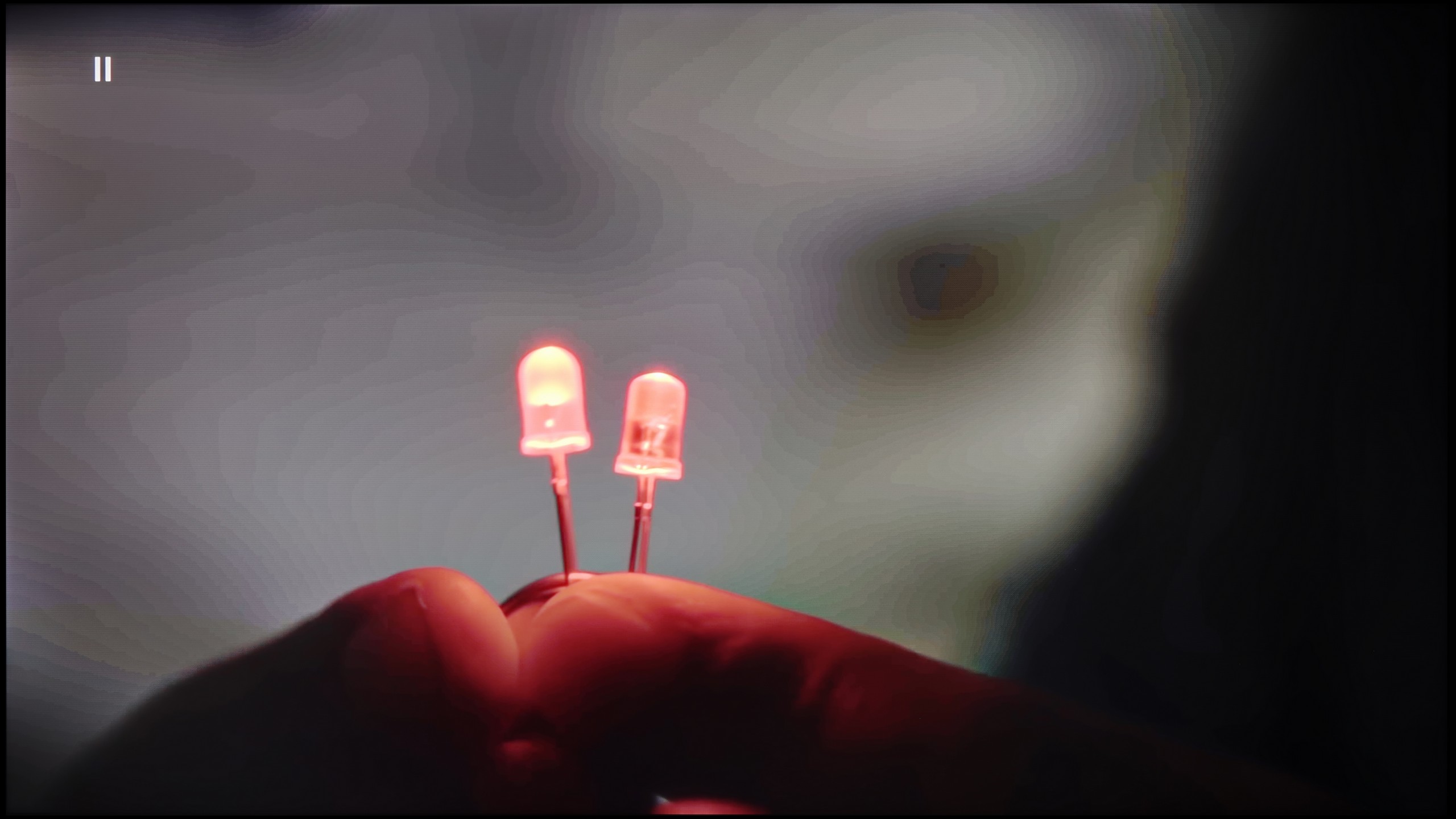
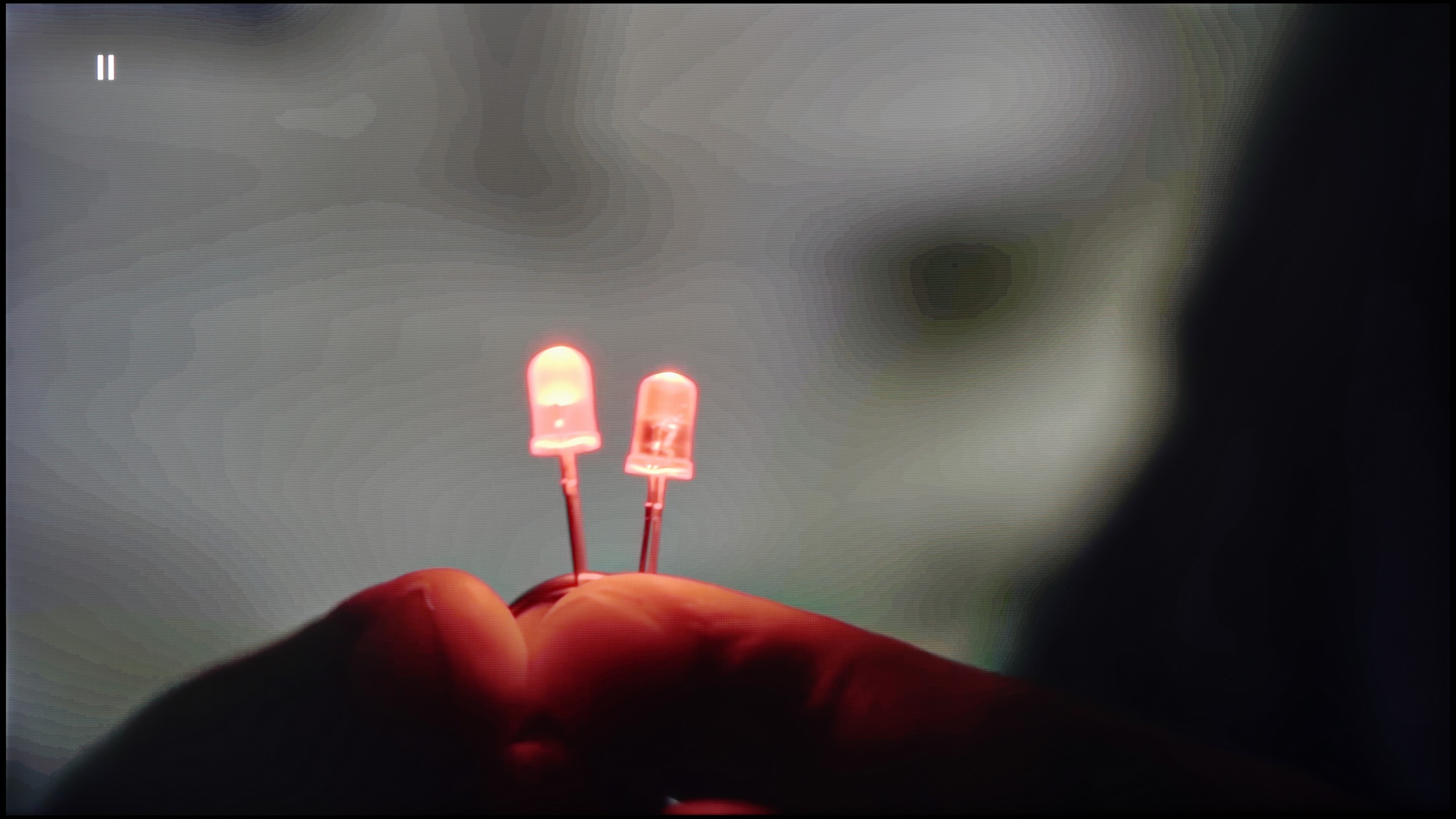
Image without overscan on the SD signal


Upscaling and digital image processing in the Q7F is a bit of a sine wave. On one hand, we have really nice upscaling – weaker sources look better than one might expect. The image becomes clearer, sharper, and even older movies or terrestrial TV hold up well. Samsung has been strong in this area for years, and the Q7F confirms that. On the other hand… things start to get tricky. The TV has a problem with overscan – part of the image is simply cut off, and it looks rather unrefined. Additionally, we were let down by a feature called "noise reduction," which should improve the smoothness of tonal transitions in weaker materials. In other Samsungs, it works relatively well, but here it practically makes no difference – the banding in gradients remains. It's a bit disappointing because we could have expected more from a model that is aimed at users looking for a display for SDR content.
Let's see how the Q8F handles older content, which often has poor quality. Let's start with the positives: the upscaling, which means raising the image to a higher resolution, works really well. The TV handles both classic television and materials from YouTube without giving the impression that we are dealing with something completely unattractive. Materials in very low resolutions, such as 576p, perform worse — the image can be cropped, and unfortunately, the overscan phenomenon cannot be turned off. However, the digital processing itself looks worse too. The noise reduction function, instead of removing unwanted interference, smooths out almost everything: film grain (which is desirable for many viewers) disappears along with the texture of the image, and the faces of the actors begin to resemble characters from cheap Turkish soap operas. It is therefore hard to consider this option useful — it's best to leave it completely turned off. Perhaps Samsung will refine the operation of this feature in updates, but for now, it’s difficult to regard it as anything other than an unnecessary addition.
Blur and motion smoothness
4/10
4.5/10
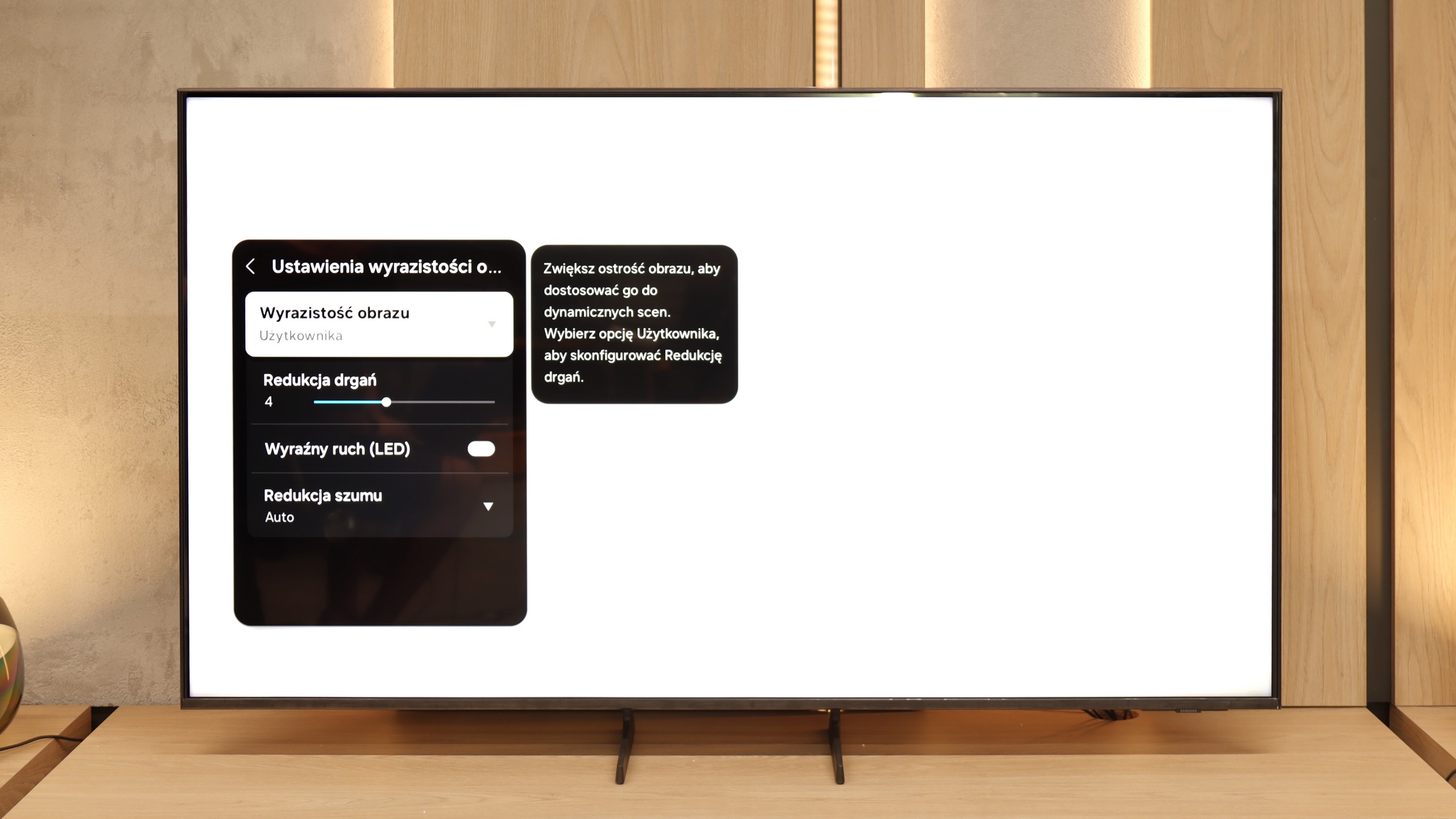
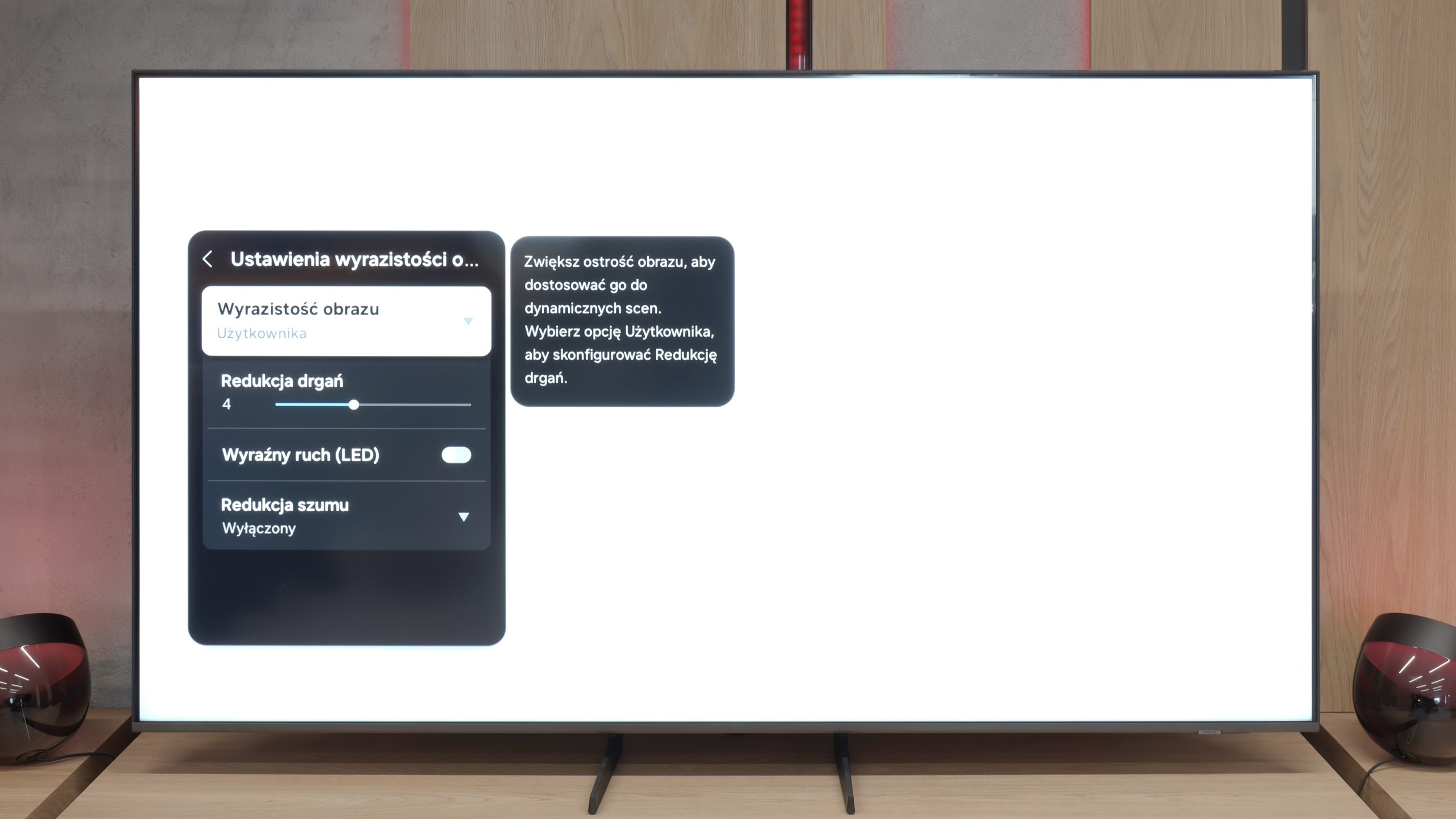
Blur (native resolution, maximum refresh rate):
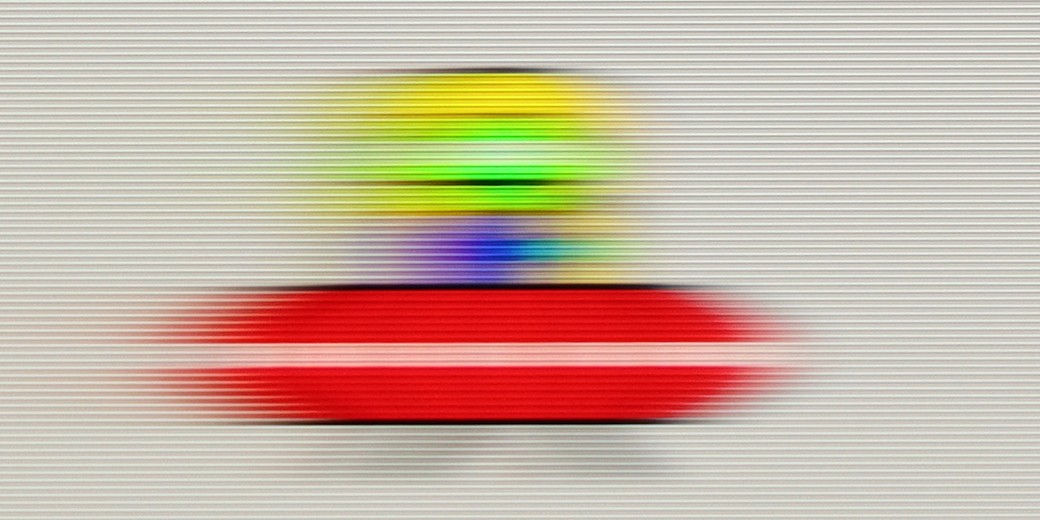
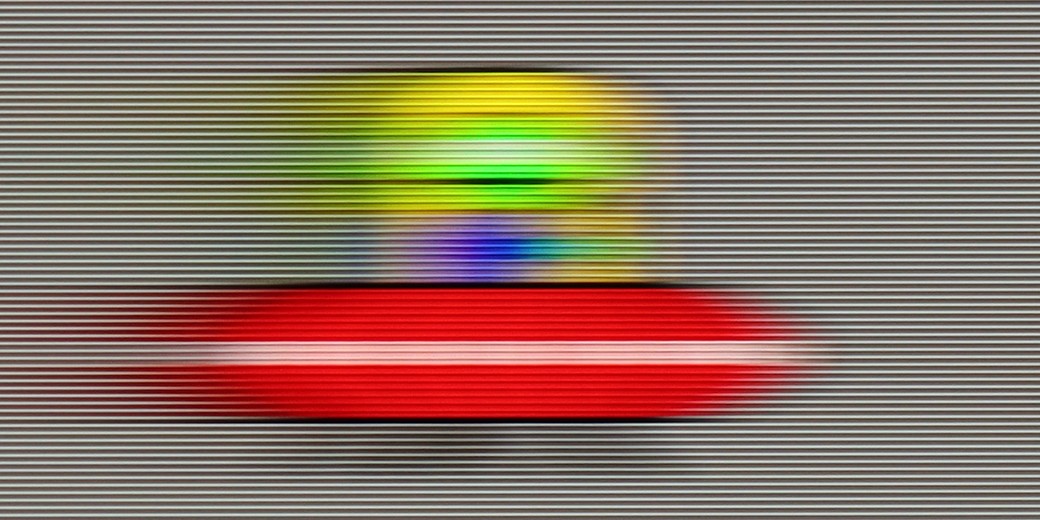
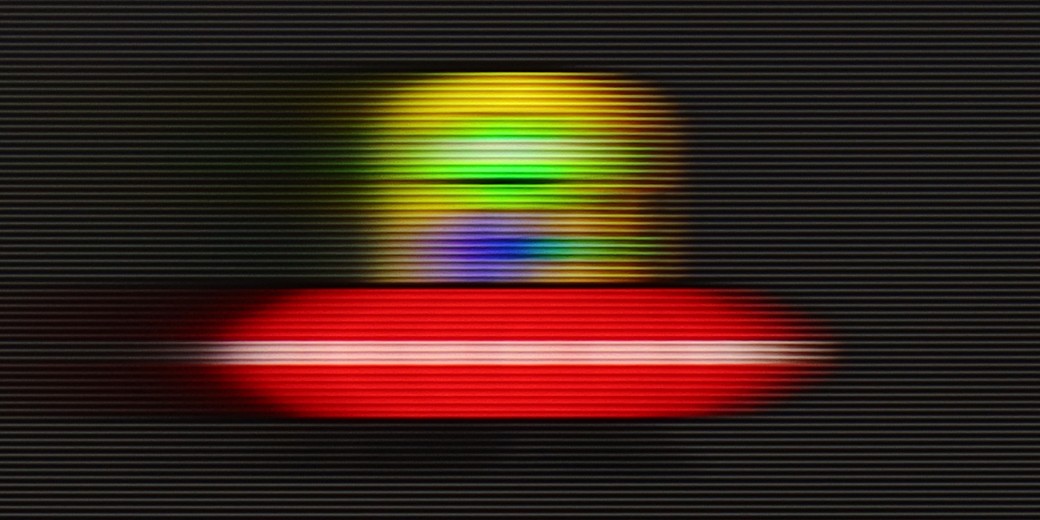
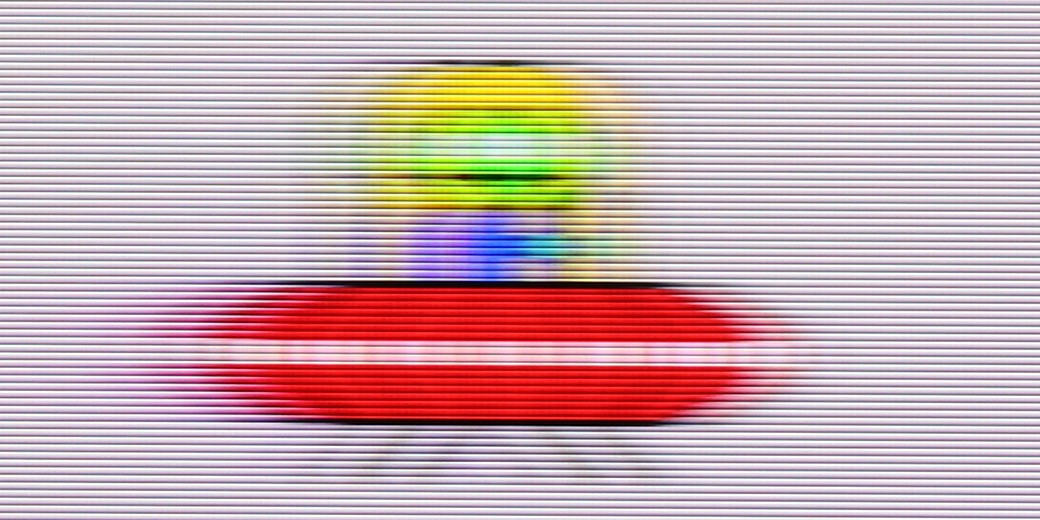
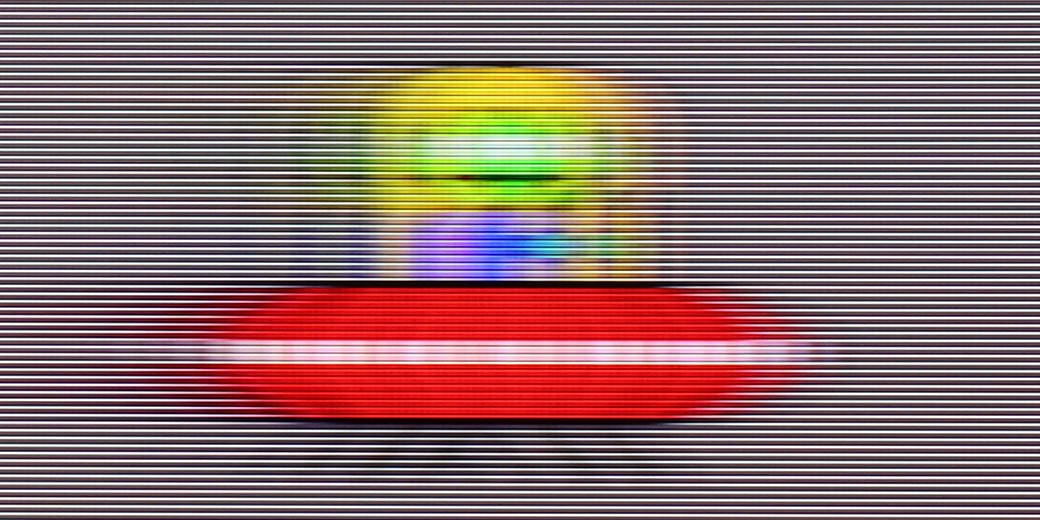
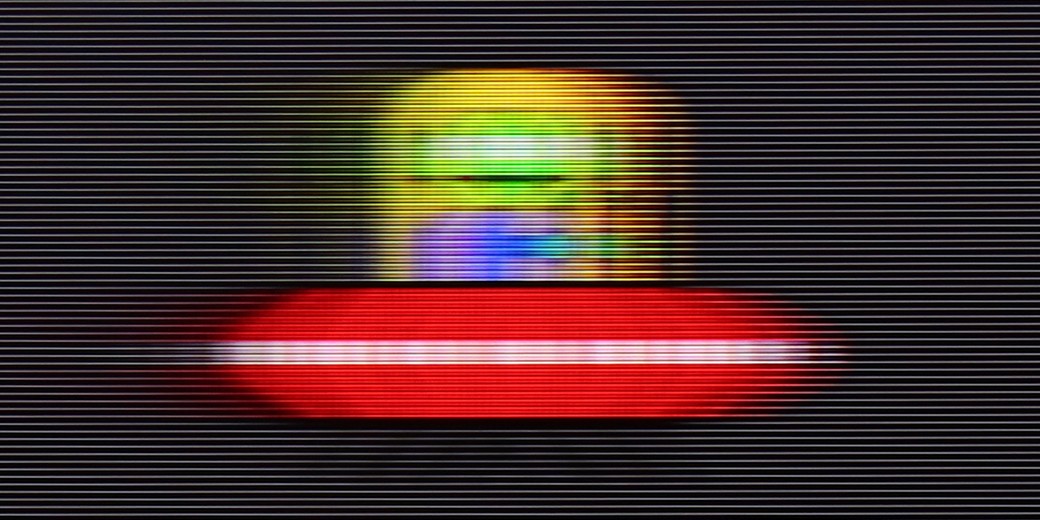
Blur (BFI function enabled):
Image flickers in this mode






Motion blur and motion fluidity in the Q7F is probably the most budget-conscious element of this TV. The 60 Hz panel is noticeable, with blur being quite evident, especially in dynamic scenes, and it's rather difficult to consider this model as equipment designed for watching sports or playing fast-paced games. In tests with the little green man, there was a long tail, and the ball in a football match would leave trails behind it.
On the plus side, the presence of motion smoothing is commendable. It really makes a difference in movies - especially since most materials are recorded at 24 frames. Here we can decide for ourselves whether we prefer a more "cinematic" image, with the slight jerkiness characteristic of cinema, or a smoother, more "television-like" one. This actually works quite well and helps improve the viewing comfort for series or movies.
Due to the 60 Hz panel, it's hard to call the Q8F a television made for gaming or watching sports. The panel isn't particularly fast, making motion blur clearly visible. If you were counting on spectacular, almost "stadium-like" experiences during broadcasts, you might feel a slight disappointment. Fortunately, in the case of movies and series, Samsung has not abandoned motion smoothing features. This is nothing other than a motion smoother that allows improving the fluidity of productions recorded at 24 or 30 frames per second. Thanks to this, one can decide whether they prefer a smoother, "television" image or to maintain a cinematic quality. It all depends on the viewer's preferences, and the ability to adjust this parameter is undoubtedly a plus.
Console compatibility and gaming features
3.3/10
3.7/10
- ALLM
- VRR
- VRR range
- Dolby Vision Game Mode
- Correct implementation of HGIG
- 1080p@120Hz
- 1440p@120Hz
- 4K@120Hz
- Game bar
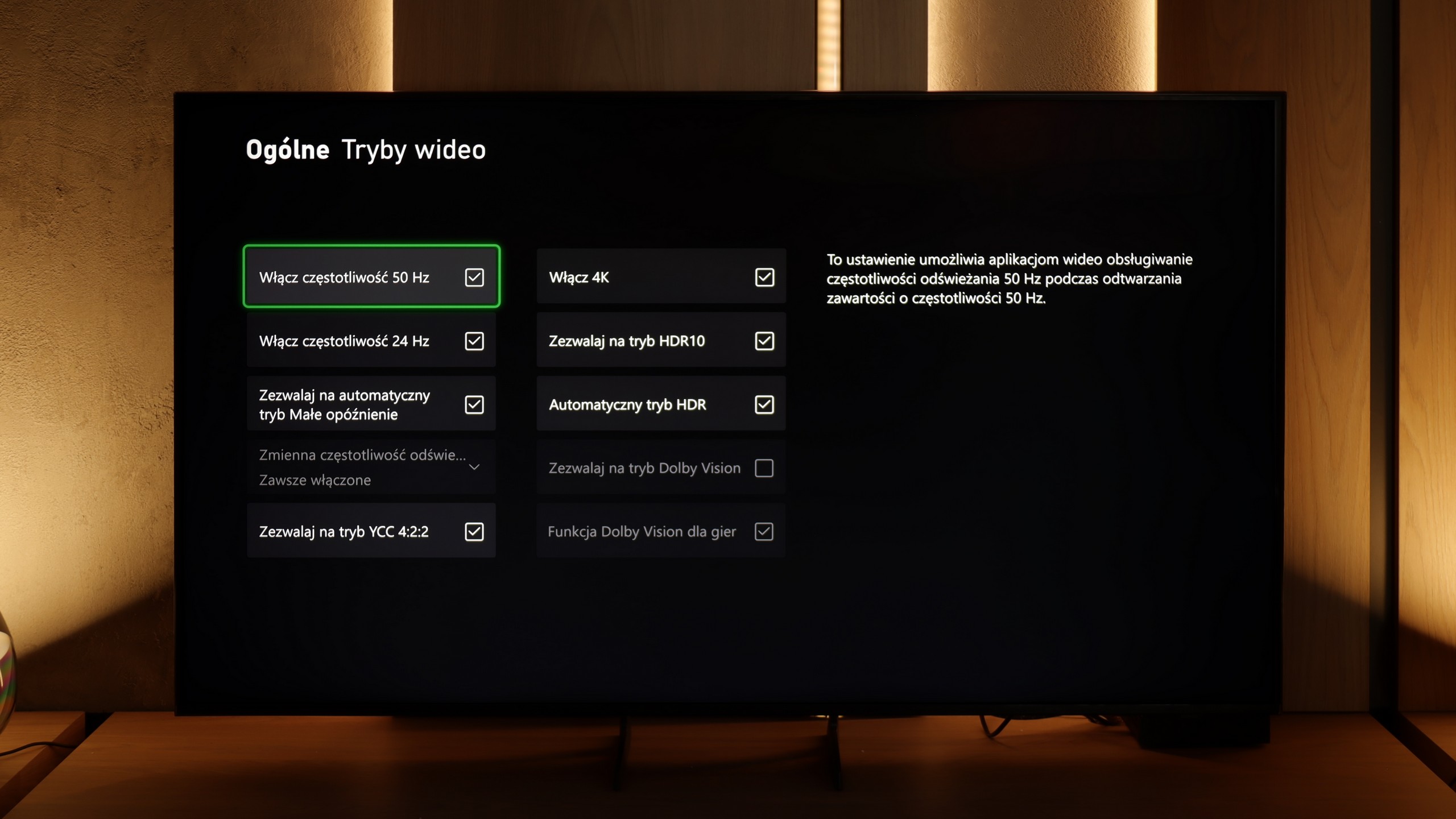
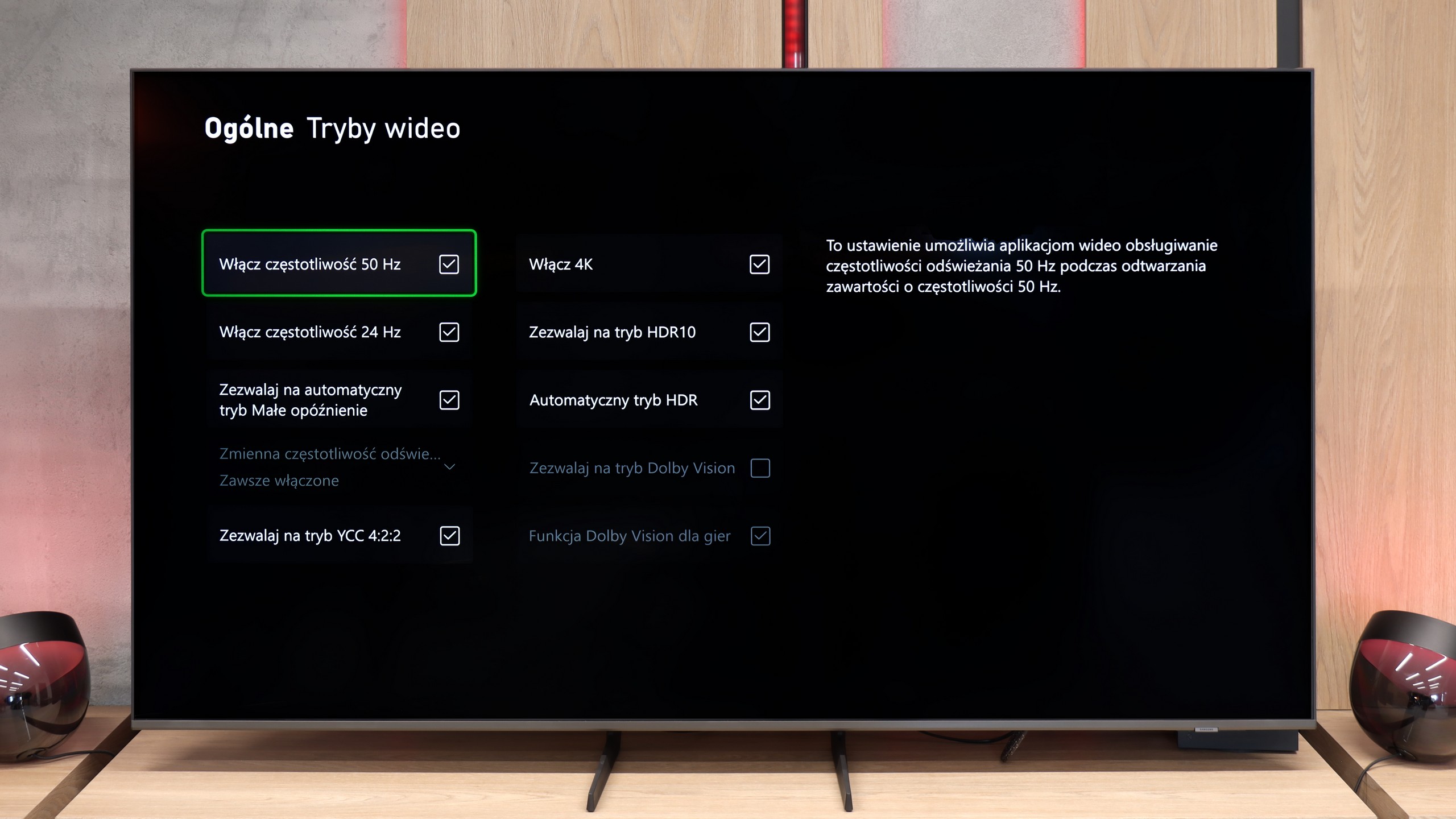
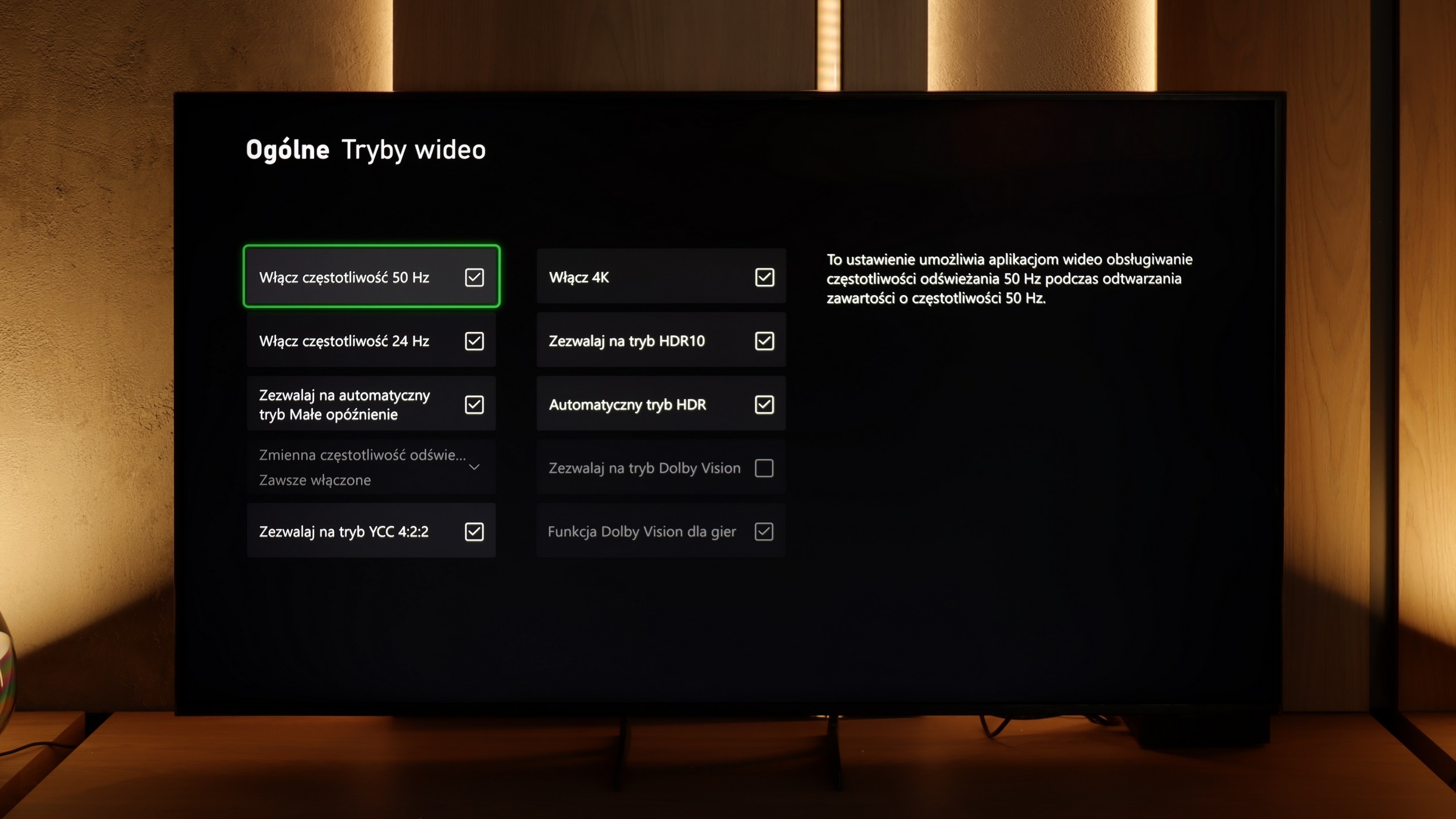
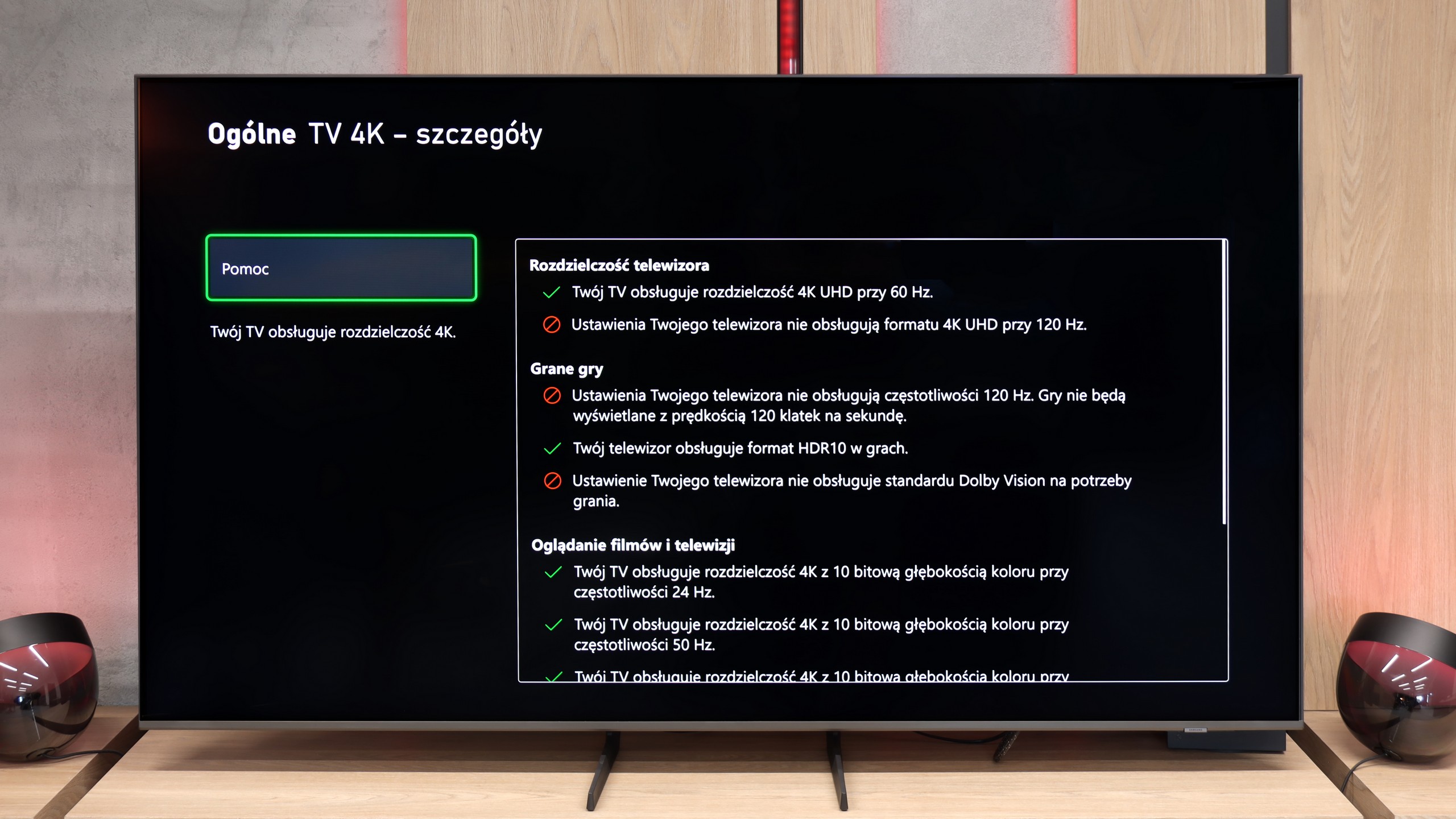
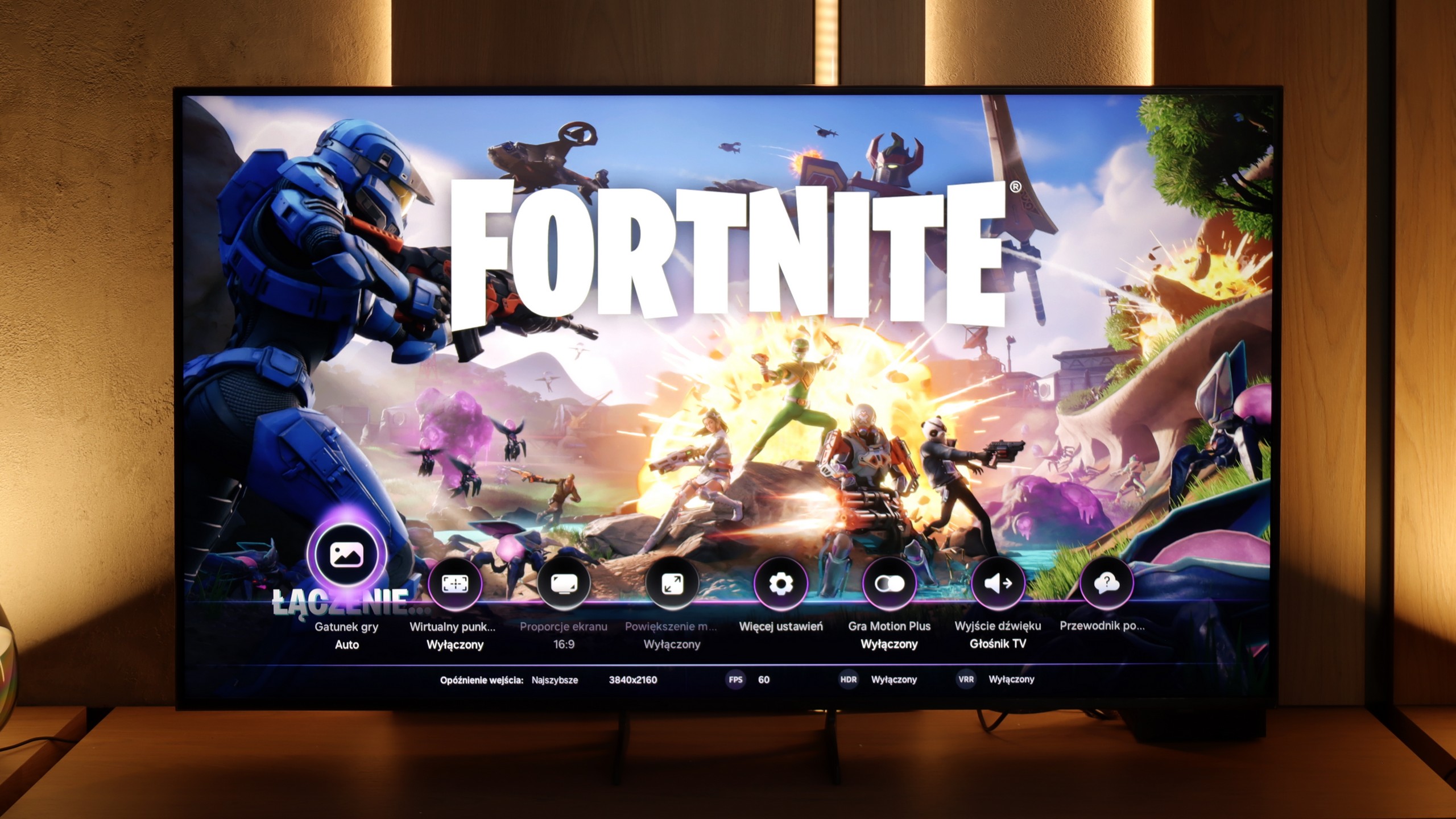
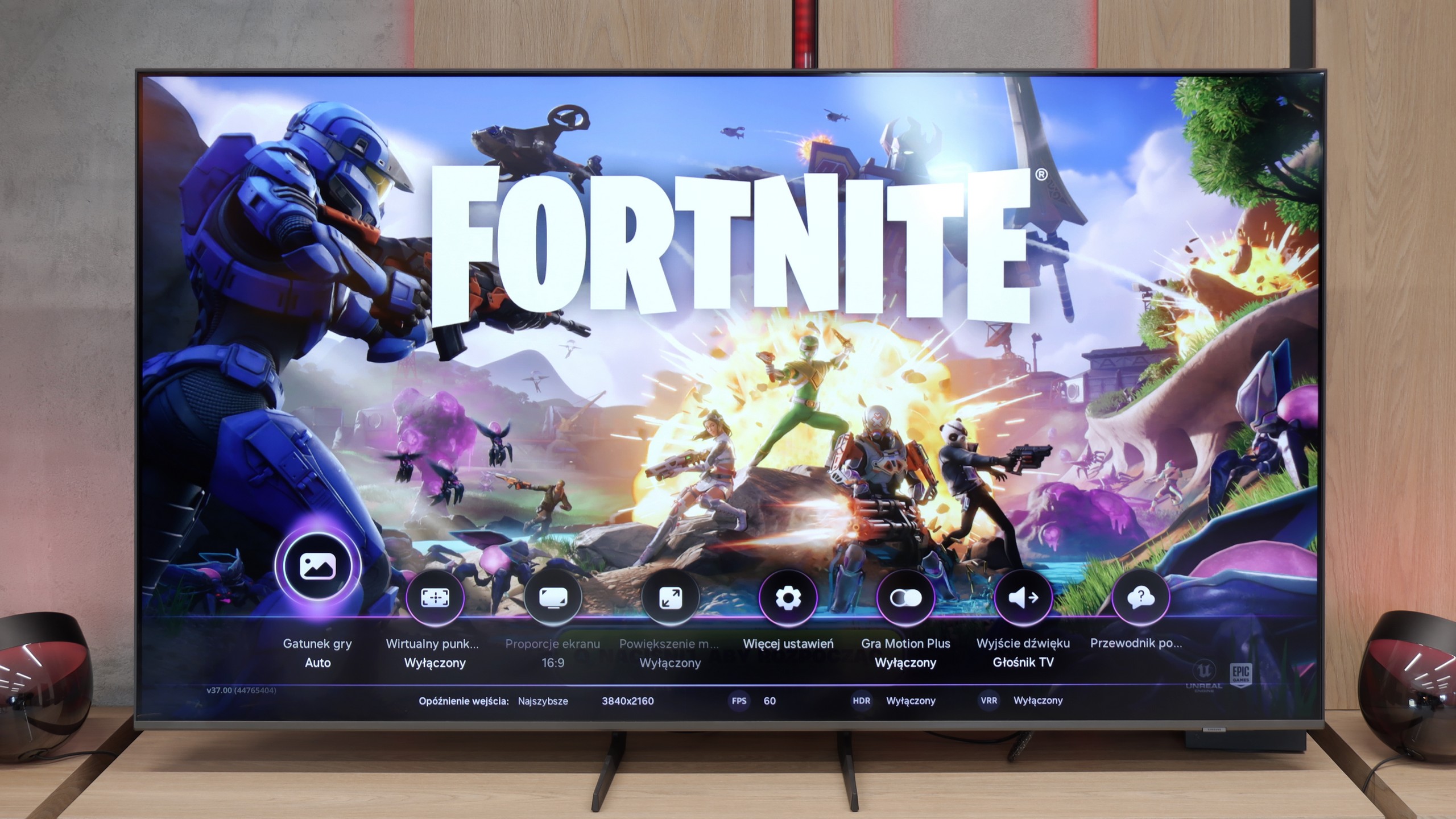
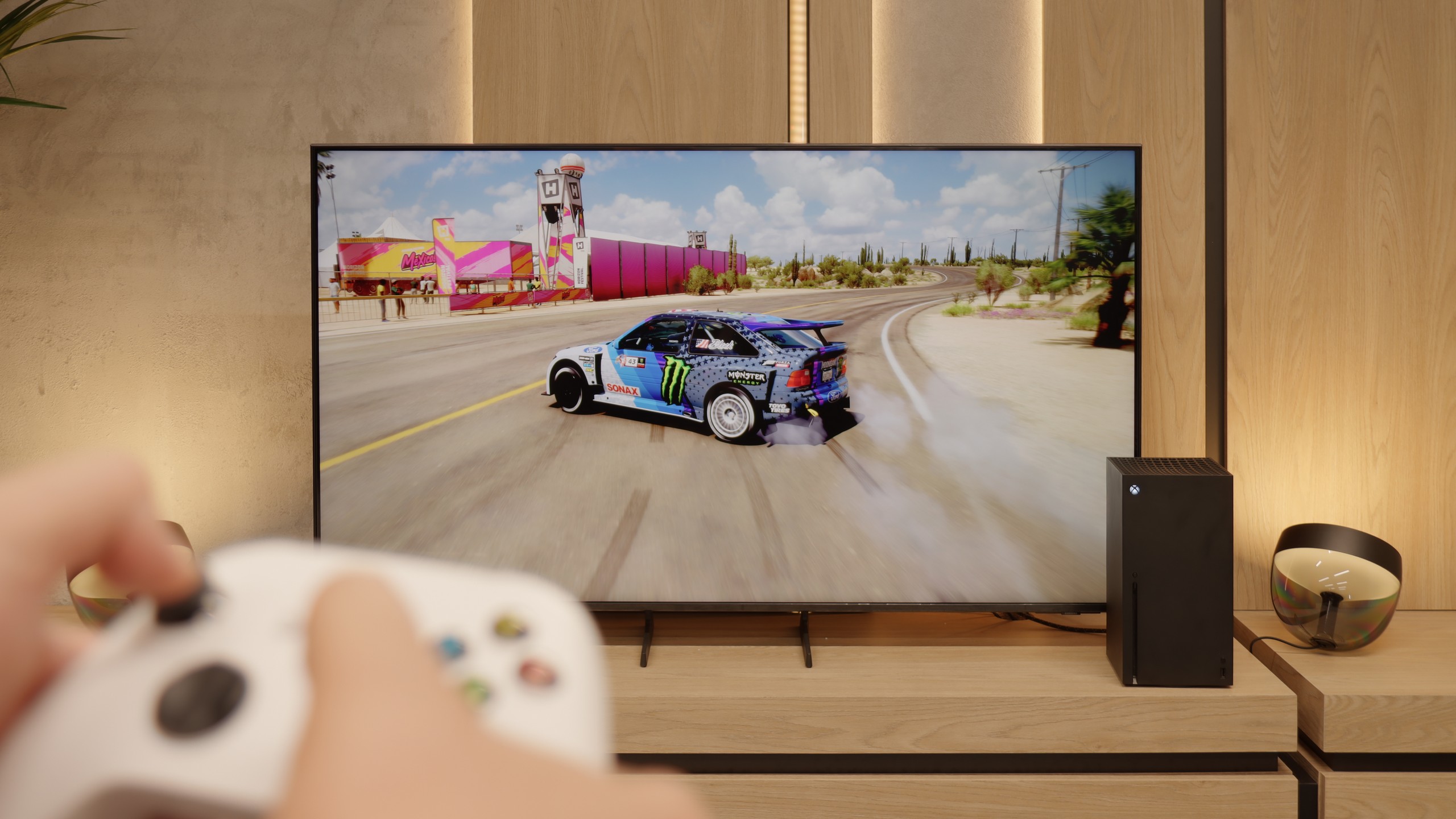
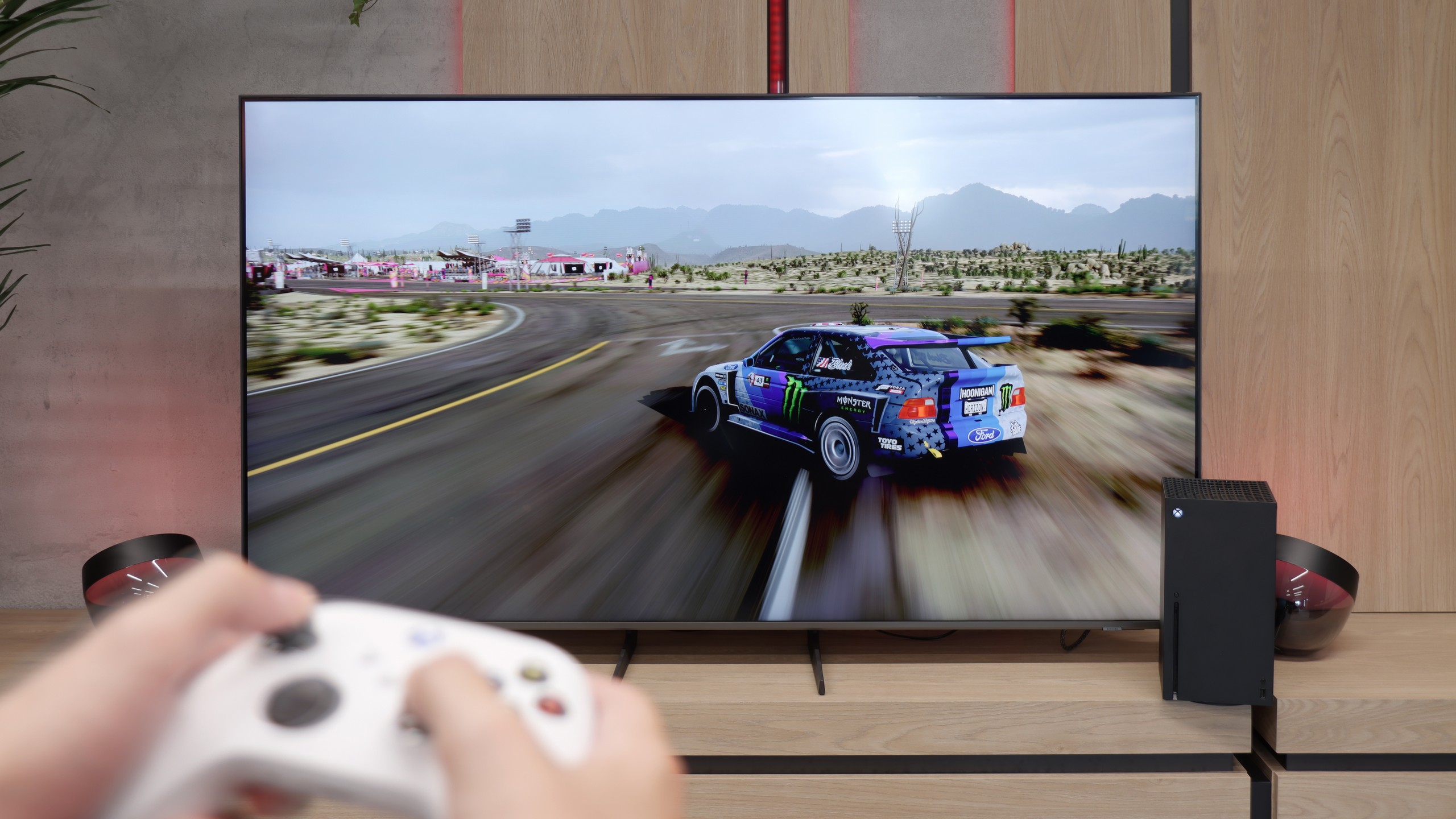
Features for gamers in the Samsung Q7F is a topic that evokes quite a bit of mixed emotions. On one hand – no sensible person expected miracles here, after all, it's a 60 Hz television, and it was clear from the beginning that it wouldn't be a device to extract the maximum from a console or PC. On the other hand, since the manufacturer promised specific solutions in promotional materials, it's natural that we wanted to see them in practice. At the start, it's quite decent. The automatic game mode (ALLM) works, so there's no need to manually fiddle with the settings; the console switches the TV to low latency mode by itself. Additionally, we have the Game Bar, which looks impressive and allows you to check a few basic parameters without leaving the game. And this is where the good news ends.
The biggest problem with the Q7F is VRR, or rather its absence. Indeed, a relevant icon appears in the menu, and you can even see it in the Game Bar, but throughout the entire test, the function remained dead and could not be activated in any way. The issue with HGiG is even more painful; this option was actually available at the beginning, but after a software update, it disappeared completely, which is simply unprofessional. Therefore, the Q7F is only suitable for absolute basics. Sure, you can turn on the console, play more mellow titles, and enjoy low input lag, but if someone is counting on more advanced features that the manufacturer promised, they will be disappointed. This is not a television intended for gaming, and it's better to be aware of this before purchasing.
It is not entirely clear what Samsung has mixed up this year with its televisions, but the Q8F is not free from all the confusion with updates and shortcomings. While its older cousin, the Q67D, could still be recommended to casual gamers with a clear conscience, it's hard to find a reason to do so here. Aside from the automatic game mode and the attractively designed Game Bar, we practically get nothing that could attract gamers. The lack of proper HGiG implementation is a big problem, especially since function simply disappeared after the 1126 update. The issue with VRR is even worse. Although it is featured in the manufacturer's brochures and appears in the Game Bar, we couldn't activate it. The Xbox Series X console did not allow it to be activated at all, and the option remained grayed out and inactive. It's hard to praise such a television even to casual gamers, which is a shame because Samsung has had a strong bargaining chip in the gaming segment for years.
Input lag
10/10
9.9/10
SDR
HDR
Dolby Vision
The input lag on the Samsung Q7F is really good for a 60 Hz display. Measurements showed values below 12 ms, which means that for regular gaming on a console, this model is more than sufficient. Of course, it doesn’t match the top-level 120 Hz screens that can go below 6–7 ms, but in everyday use, it's hard to talk about noticeable delay. In this regard, the Q7F does not lag behind the competition in its segment and can easily be considered a safe choice for casual or sports gaming. At least in this respect.
Fortunately, when it comes to gaming, Samsung didn't try to "enhance" anything, and the input lag remained at an excellent level. Results oscillating around 10–15 ms mean that the delays are practically imperceptible. The controls are instant, and the responses from the console or computer appear on the screen with no noticeable delay. In this regard, the Q8F performs exceptionally well, and it's hard to find any faults with it.
Compatibility with PC
6/10
6/10
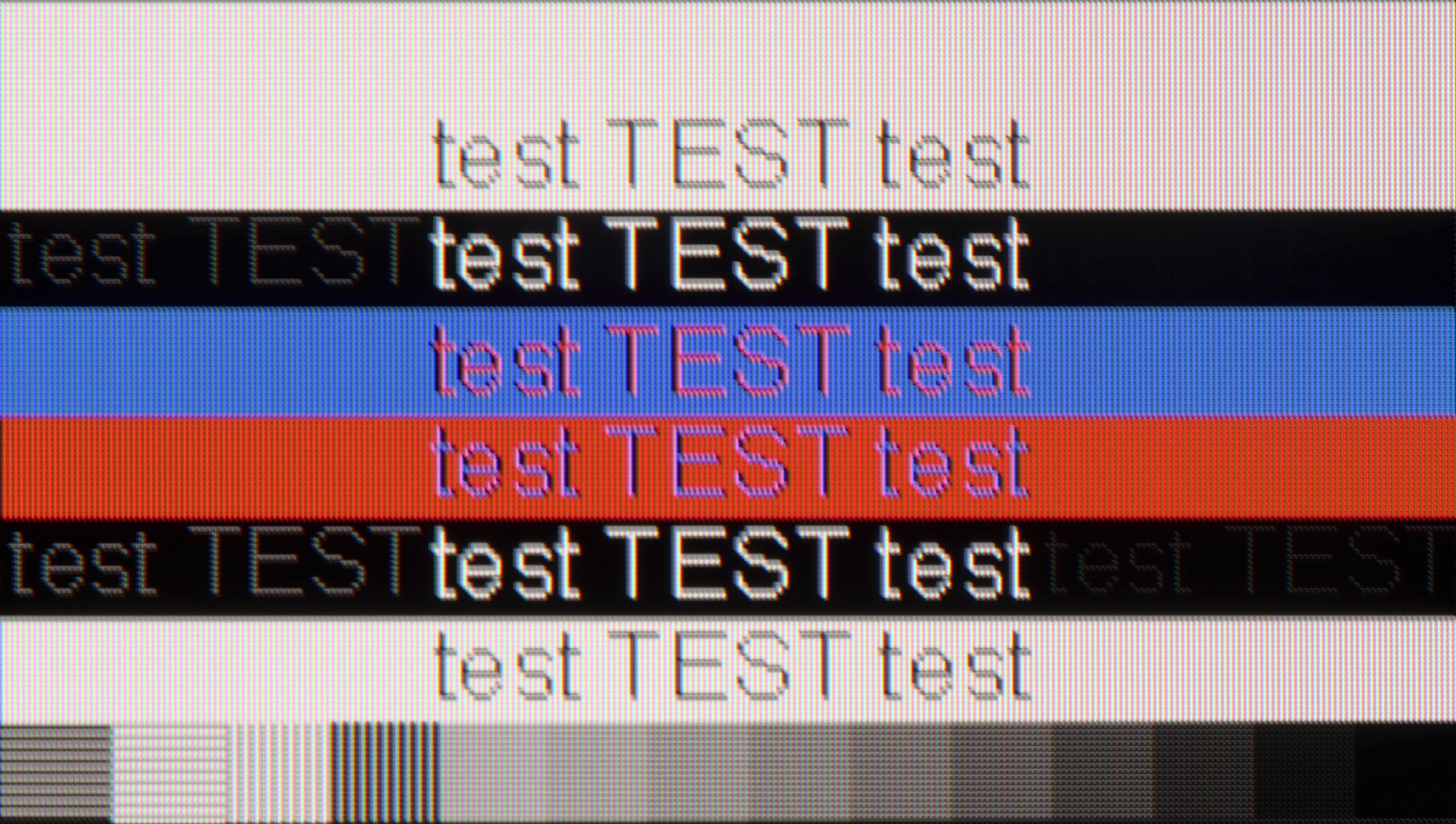
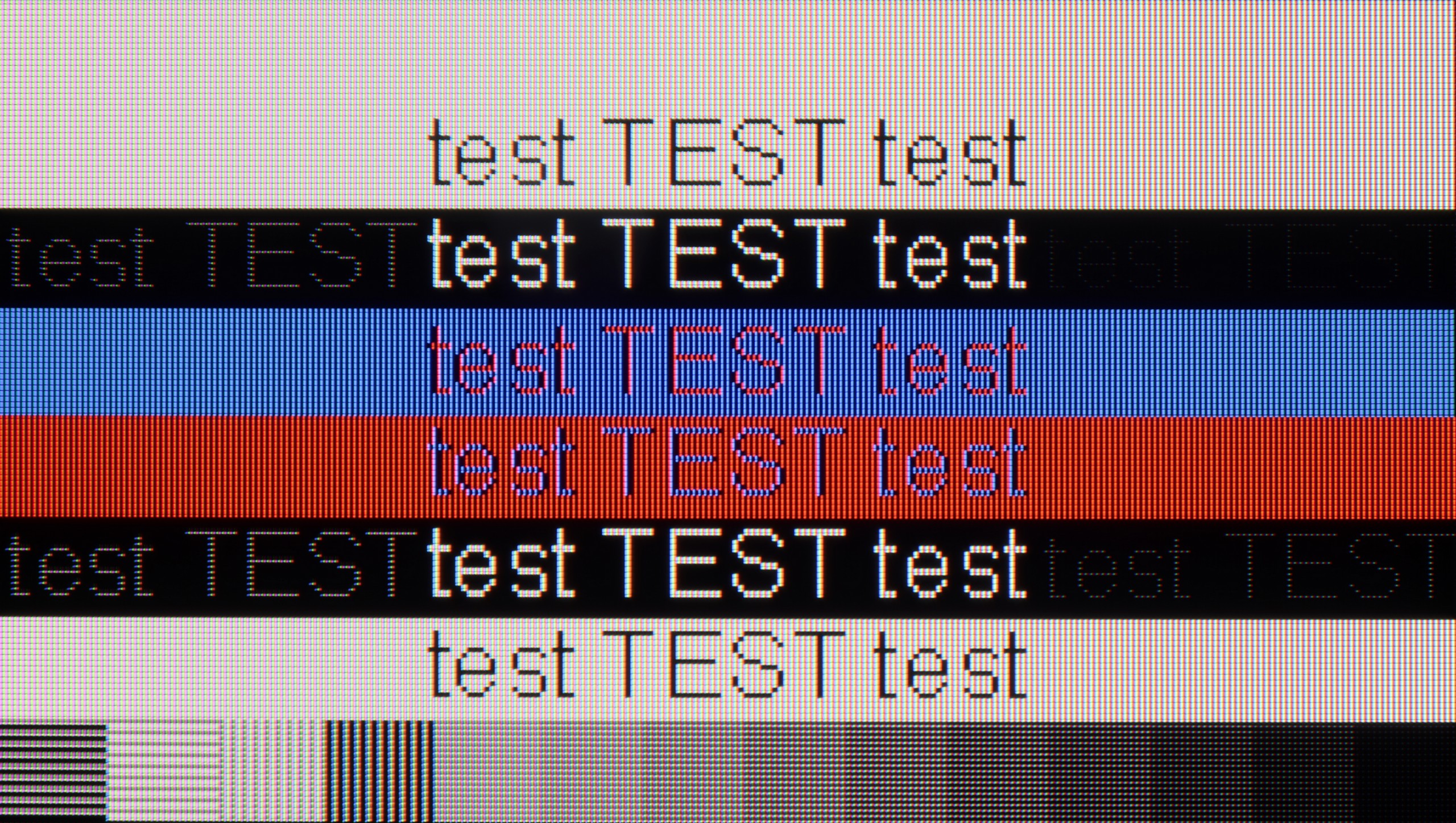
Cooperation with a PC on the Q7F is decent, although it's not a TV that will satisfy the most demanding users. The fonts are displayed clearly and sharply, so you can comfortably work on it – especially for everyday office tasks or browsing the internet. With thin letters, you can notice slight shading, but it's not something that interferes with normal use. In a smaller size, the Q7F can actually work as a computer screen, although you have to keep its limitations in mind. The lack of variable refresh rate means that we won't benefit from G-Sync or FreeSync, and 60 Hz effectively closes the door to more demanding PC gaming. For work and light use, it will be okay, but for serious gaming, it's definitely better to look for something higher up in Samsung's offering.
Although playing on the Q8F is not particularly attractive — it lacks modes with lower resolutions and higher refresh rates, and there are issues with VRR (G-Sync) along with a matrix limited to 60 Hz — as a work monitor, the television performs excellently. The readability of fonts is at a very high level, so working with text or spreadsheets in Excel is a pure pleasure. In this regard, the Q8F can be a real alternative to a large office monitor.
Viewing angles
3.5/10
3.4/10
The viewing angles on the Q7F are simply poor – typical for VA panels. Just sitting slightly to the side and it's immediately clear that the picture loses quality. Colors fade, contrast significantly drops, and blacks begin to resemble more of a gray than anything deep. This is a television that is definitely best viewed straight on, and any larger viewing angle comes with compromises.
The viewing angles on the Q8F can be described as average, which stems from the use of a VA panel. When watching the TV straight on, the image looks very good, but as soon as you shift a bit to the side, it starts to fade and lose contrast. The colors gradually lose saturation, and black takes on a grayish hue. This is a typical limitation of this type of panel, and it's hard to expect miracles here. Compared to IPS panels, the difference is clear — although they are weaker in contrast, they maintain color consistency better at an angle. The Q8F performs best in a classic setup, where viewers sit directly in front of the screen. If you plan on watching with a larger group, with people spread out more widely in the living room, the effect may not be as satisfying.
TV efficiency during daytime
3.9/10
5.6/10
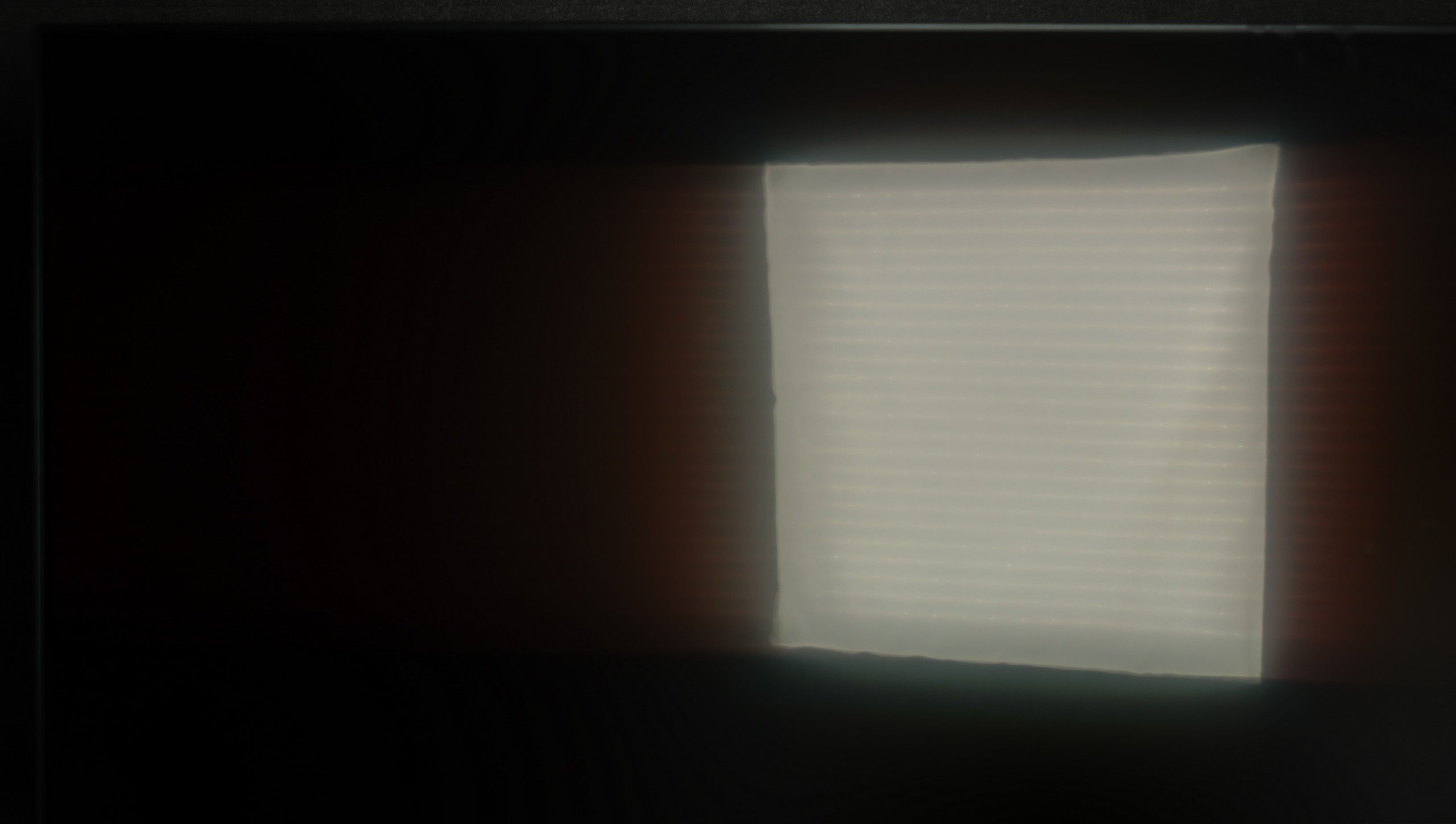
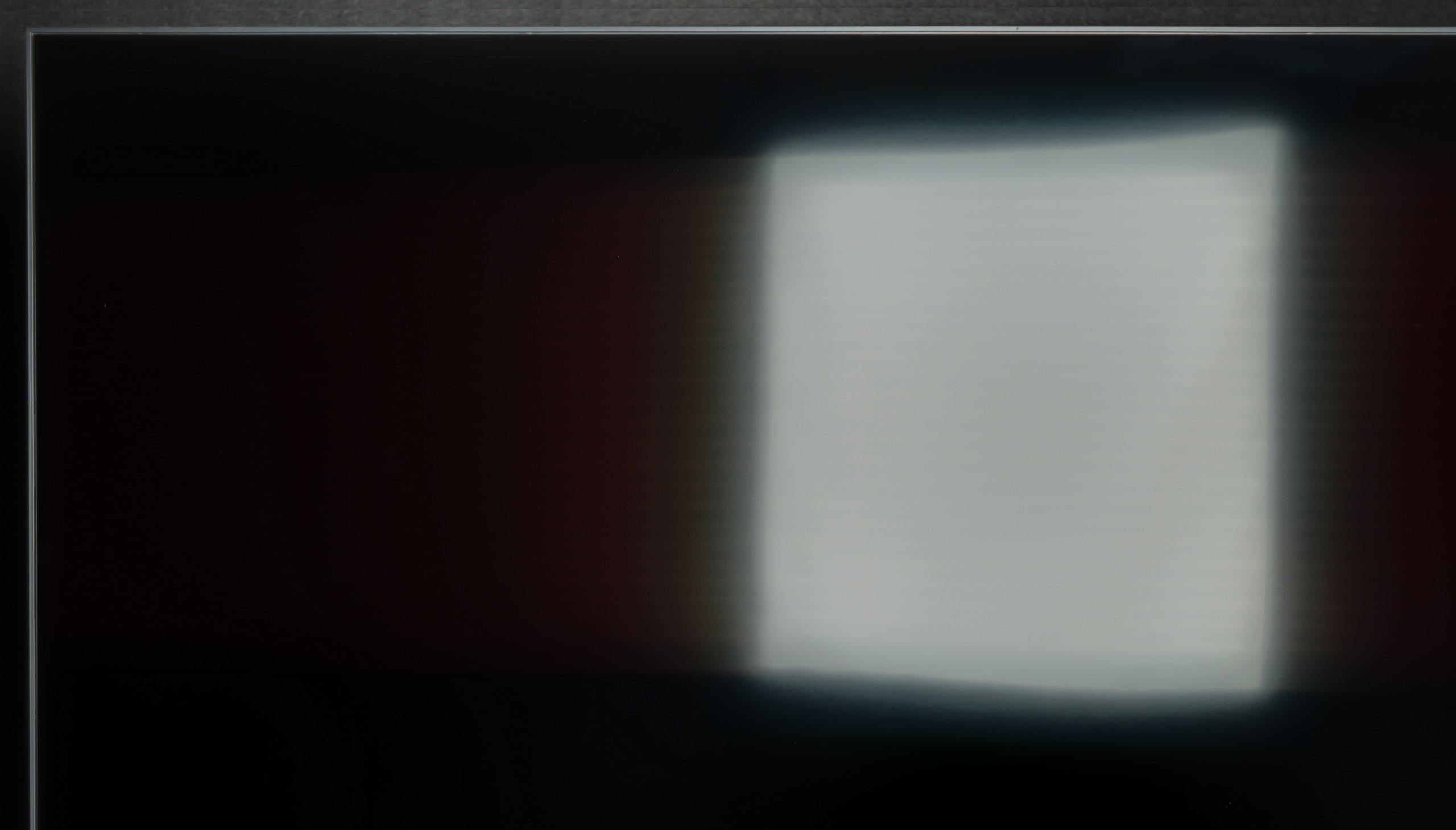
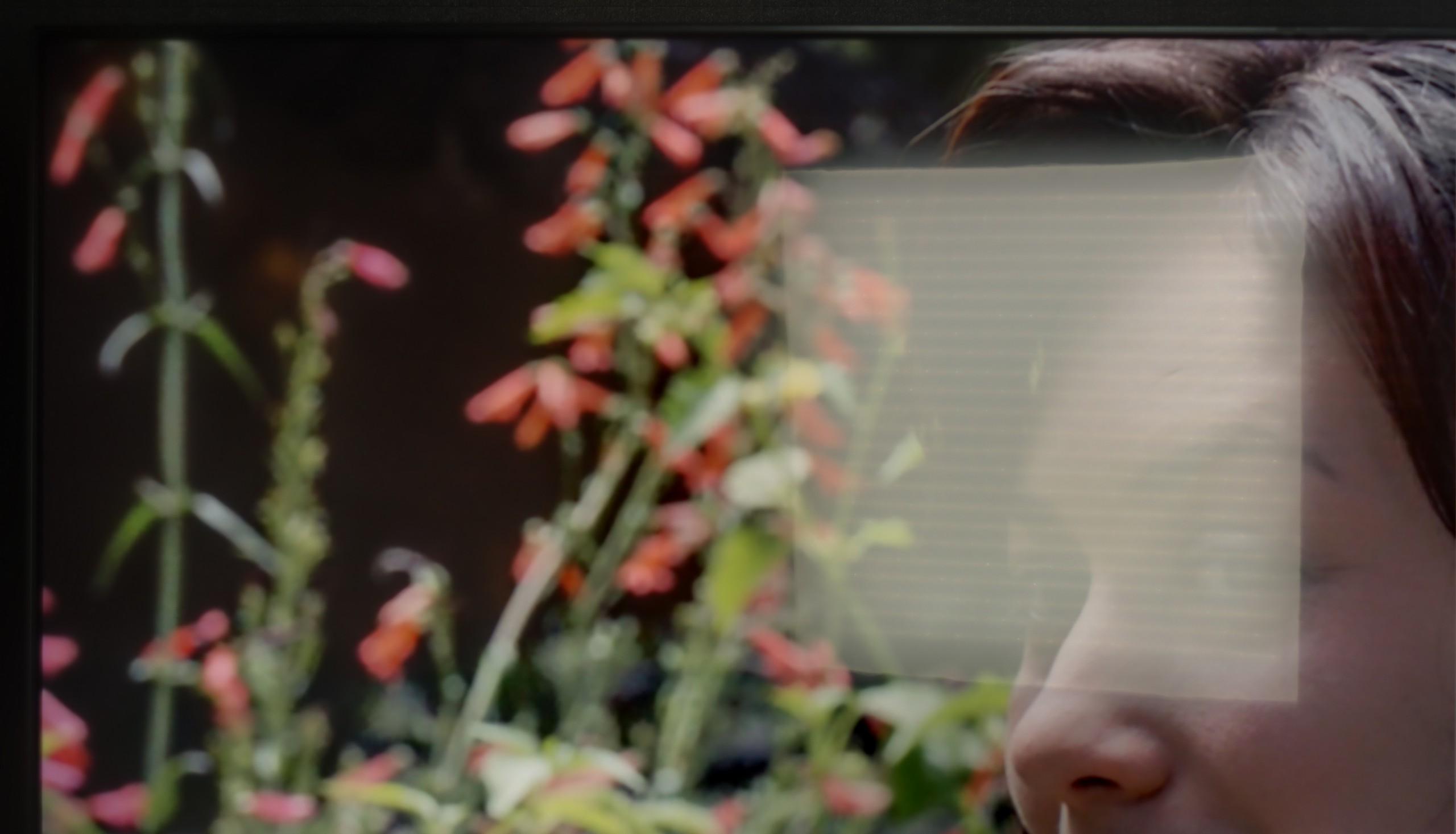
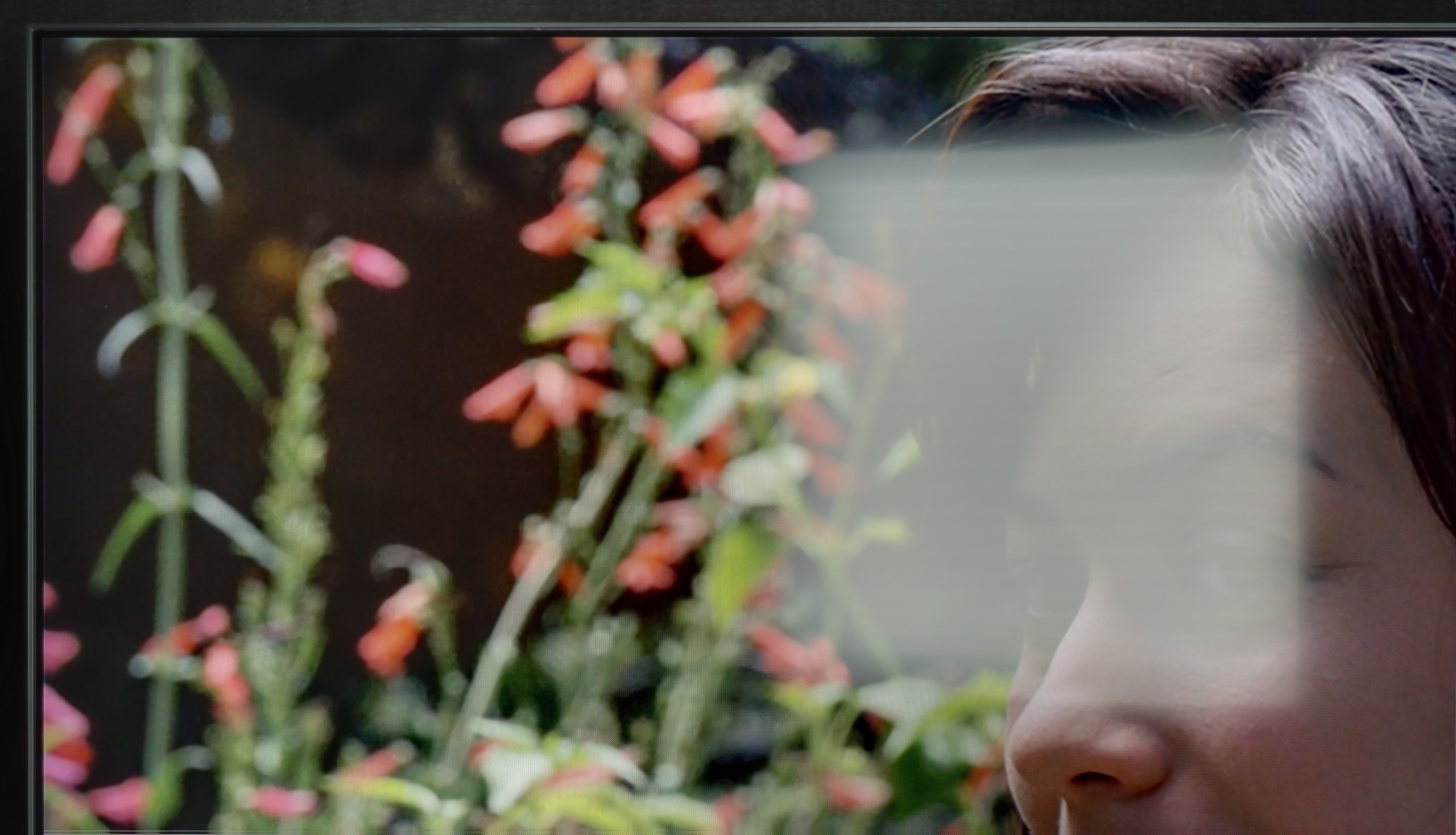
Matrix brightness
Average luminance SDR
Samsung Q8F: 430 cd/m2
Samsung Q7F: 237 cd/m2
The performance of the Q7F during the day unfortunately does not impress. Due to low brightness, the screen quickly succumbs in very sunlit rooms. Therefore, it is difficult to recommend it to those who plan to watch television in a bright living room with large windows. In moderately lit rooms, it still manages, but in bright light, the picture loses clarity. Additionally, the fact that the panel does not always effectively handle reflections means that during the day, glare can be problematic. This is more of a screen for evening viewing than for daily sessions in full sunlight.
The Q8F performs quite well during the day. Its brightness hovers around 450 nits, which proves to be sufficient for moderately bright living rooms. It is not a television that will win the battle against sunlight streaming directly through the window, but under typical home conditions, the picture remains clear and appealing. A major plus is the satin finish on the screen, which effectively reduces light reflections and allows for color saturation to be maintained even when the room is bright. As a result, watching series during the day or evening sports broadcasts with the lights on is not a problem. The Q8F does not aspire to be a cinema television in full sunlight, but as a daily screen in normal home conditions, it performs really solidly.
Details about the matrix
Subpixel Structure:
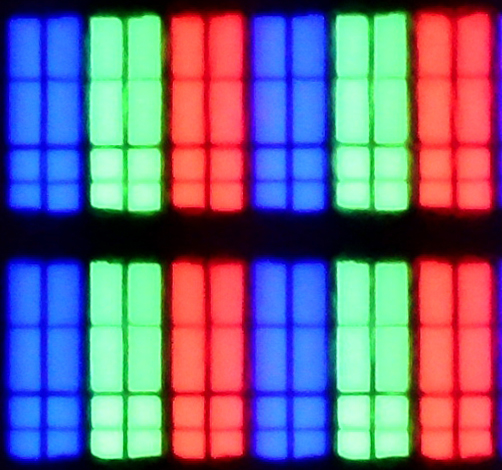
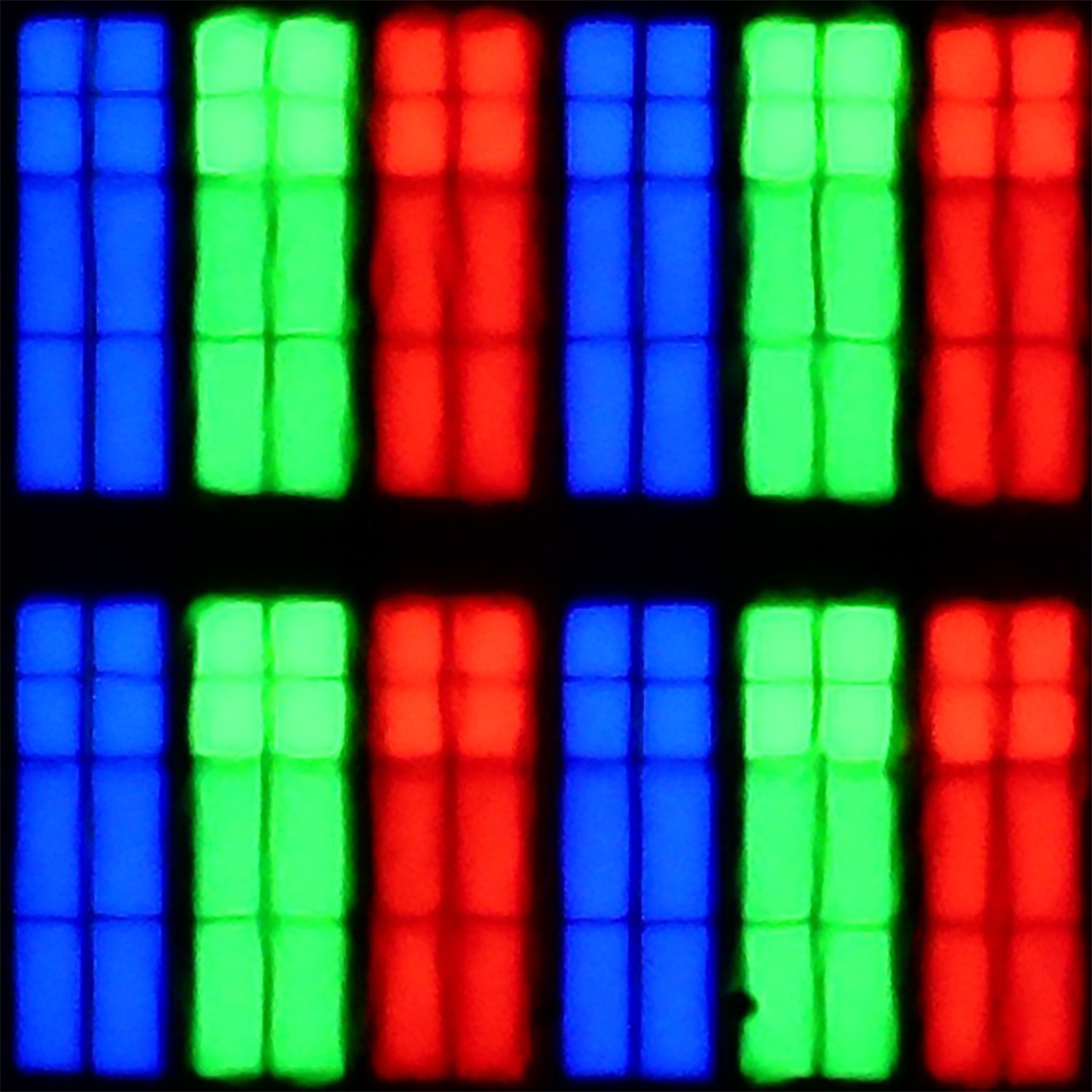
Panel uniformity and thermal imaging:
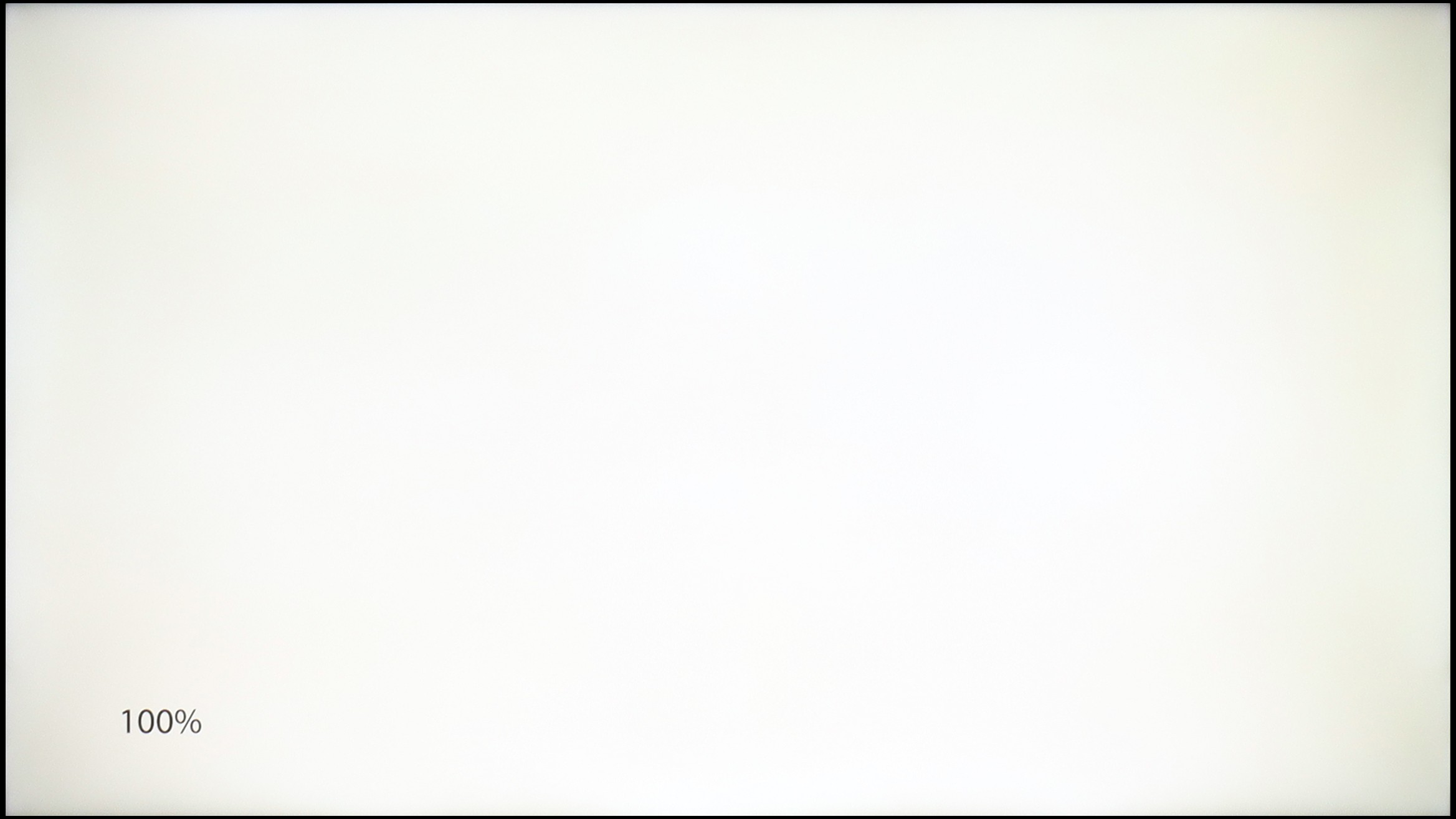
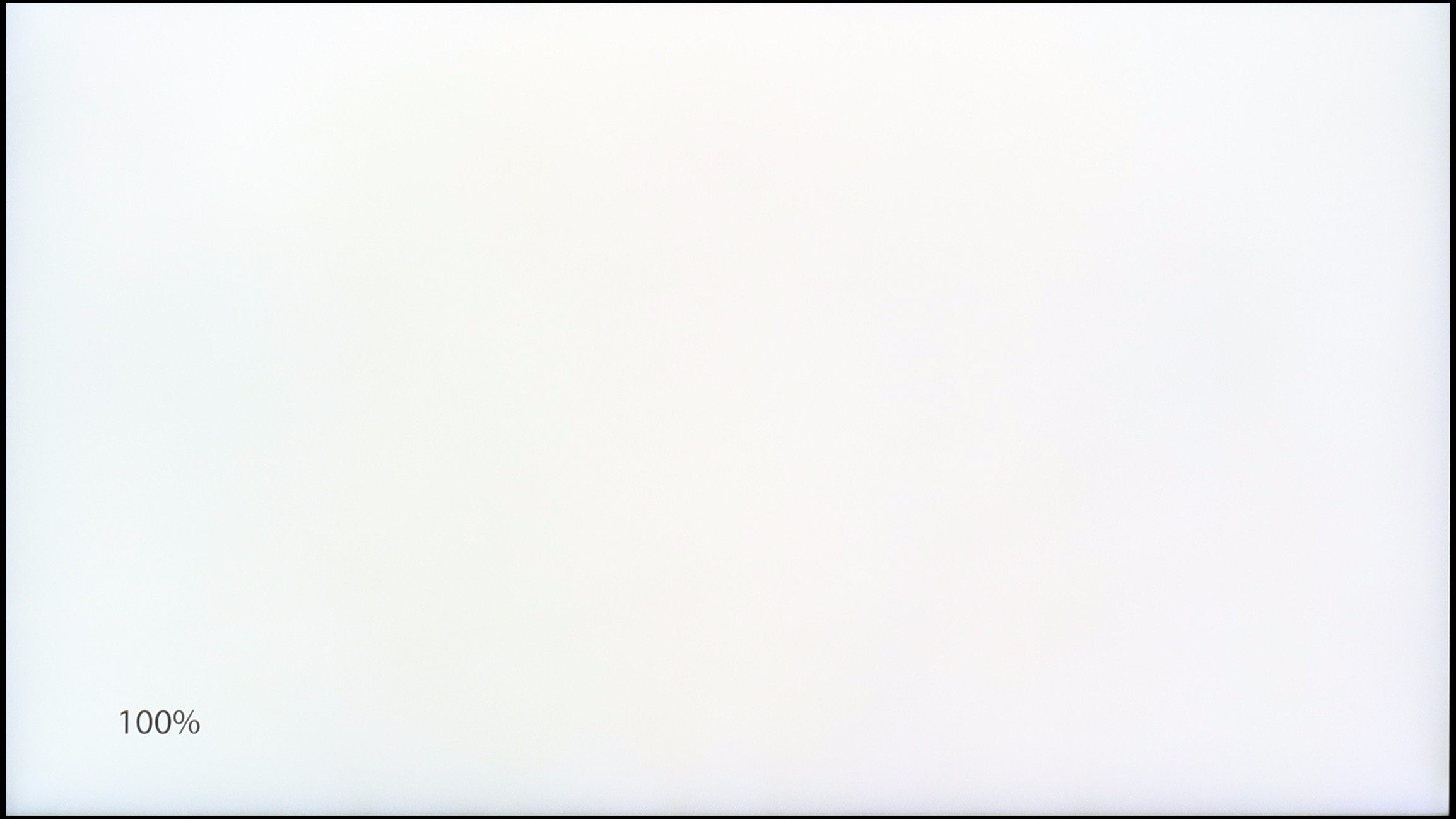
Samsung Q7F
Samsung Q8F
TV features
7.3/10
7.3/10
- HDMI inputs3 x HDMI 2.0, 0 x HDMI 2.13 x HDMI 2.0, 0 x HDMI 2.1
- OutputsToslink (Optical audio), eARC (HDMI), ARC (HDMI)Toslink (Optical audio), eARC (HDMI), ARC (HDMI)
- Network InterfacesWi-Fi 2.4GHz, Wi-Fi 5GHz, Ethernet (LAN) 100MbpsWi-Fi 2.4GHz, Wi-Fi 5GHz, Ethernet (LAN) 100Mbps
- TV receptionDVB-T, DVB-T2, DVB-S, DVB-S2, DVB-CDVB-T, DVB-T2, DVB-S, DVB-S2, DVB-C
Classic features:
- Recording to USB (terrestrial TV)
- Recording programming
- Picture in Picture (PiP)
- RF remote control (no need to aim at the screen)
- Backlit remote control
- Teletext
- Audio only mode
- Bluetooth headphones support
- Simultaneous Bluetooth headphones & TV audio
Smart features:
- AirPlay
- Screen mirroring (Windows Miracast)
- Voice search
- Voice search in native language
- Ability to connect a keyboard and mouse
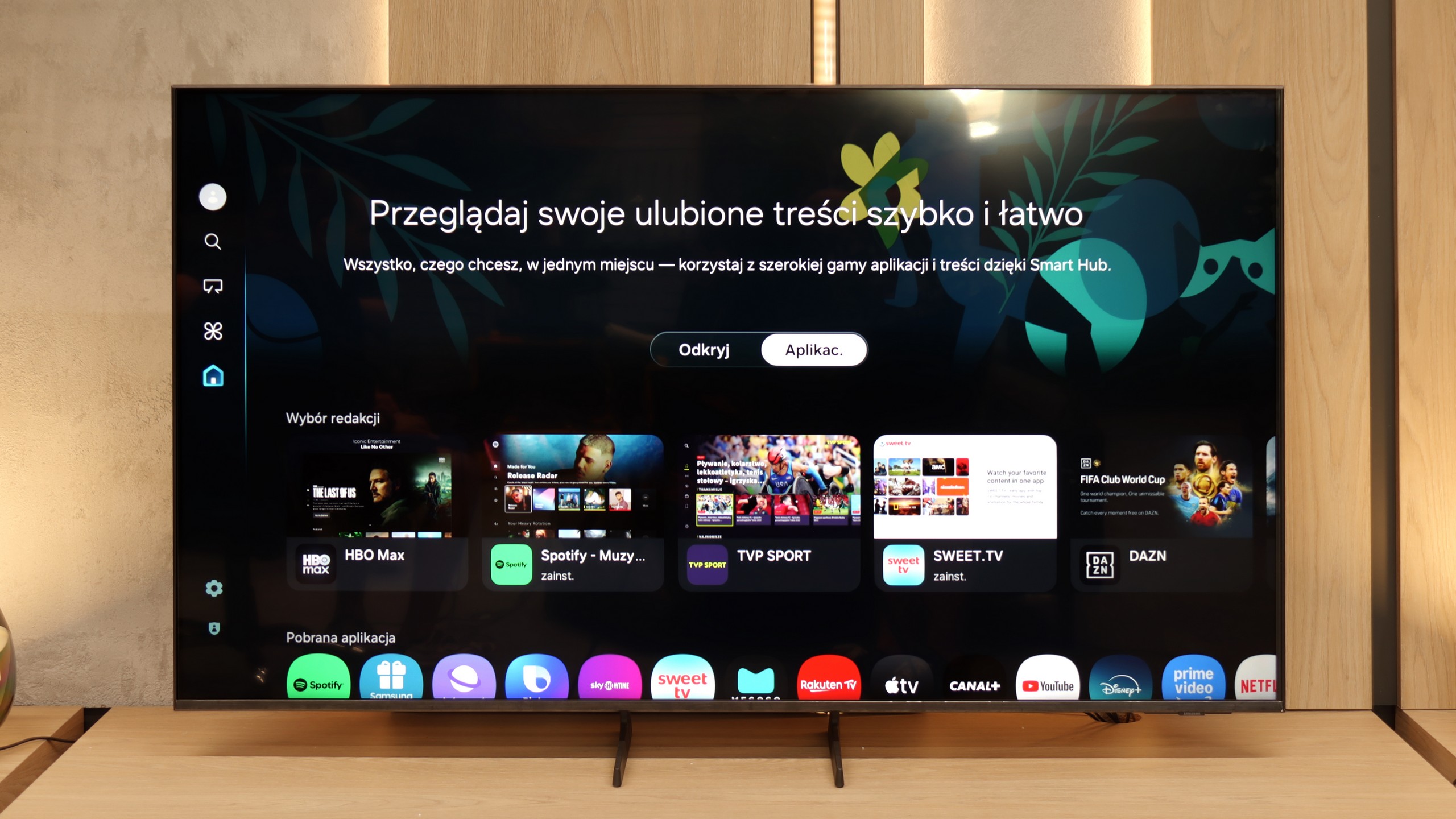
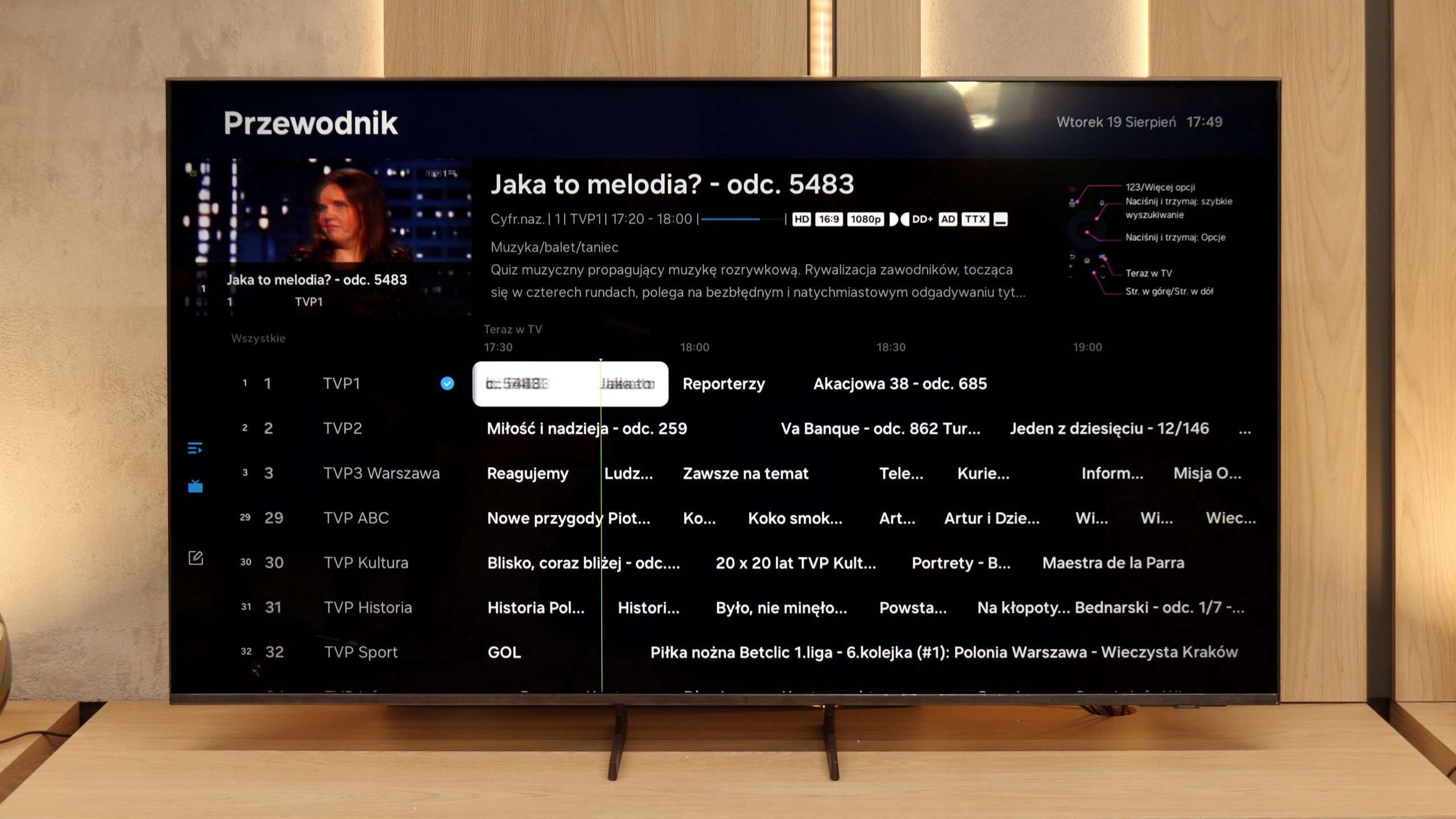
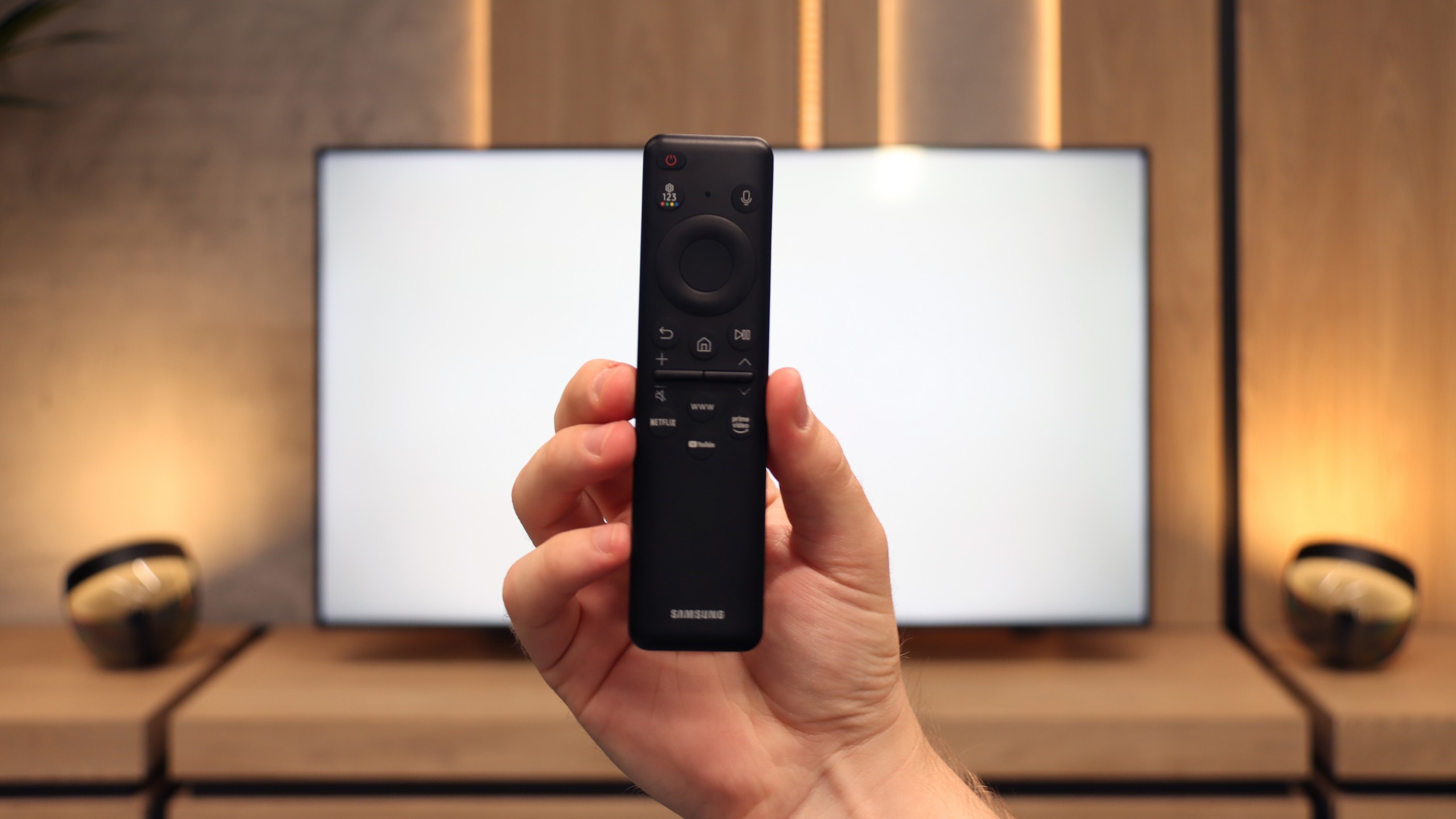
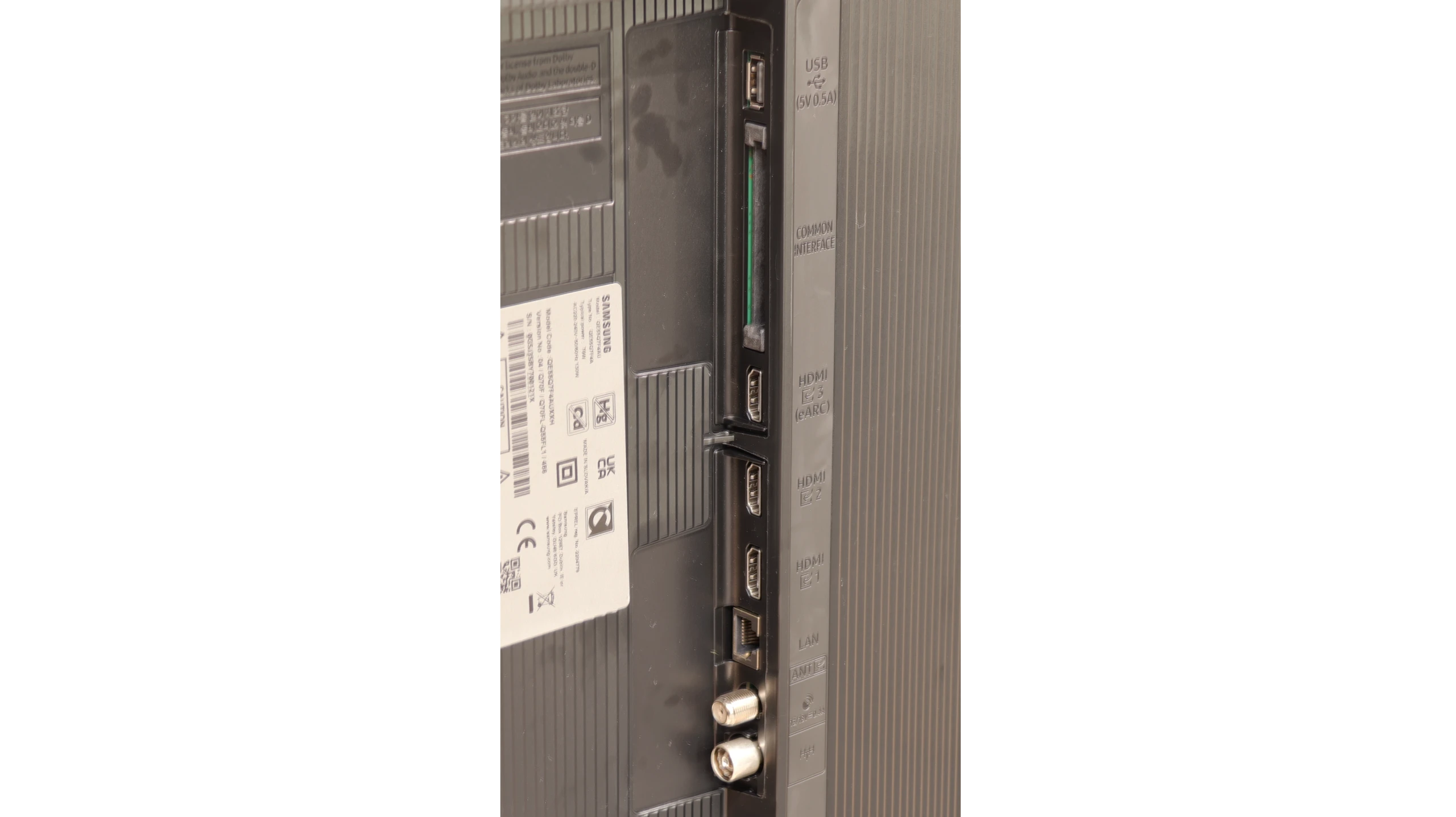
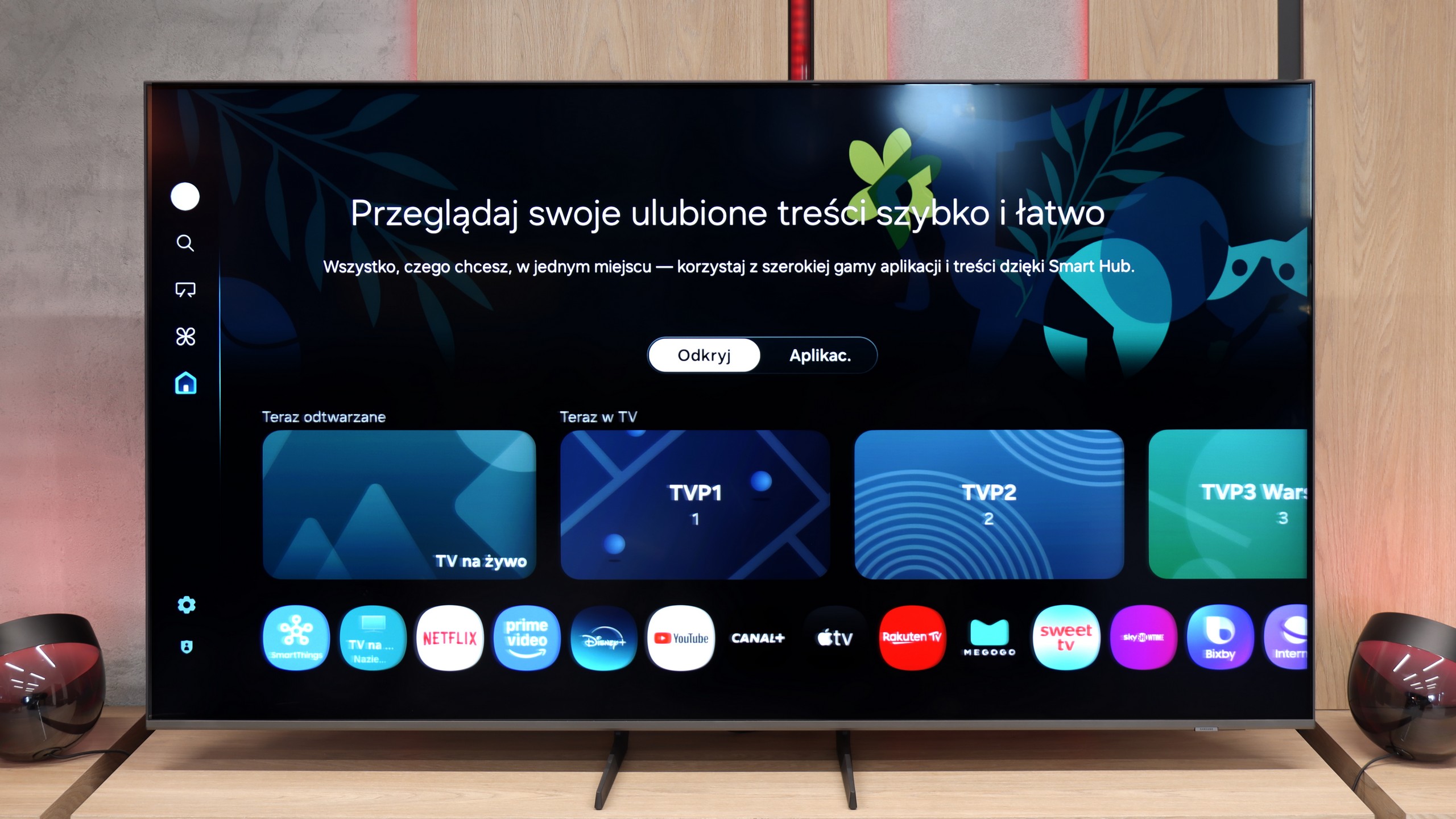
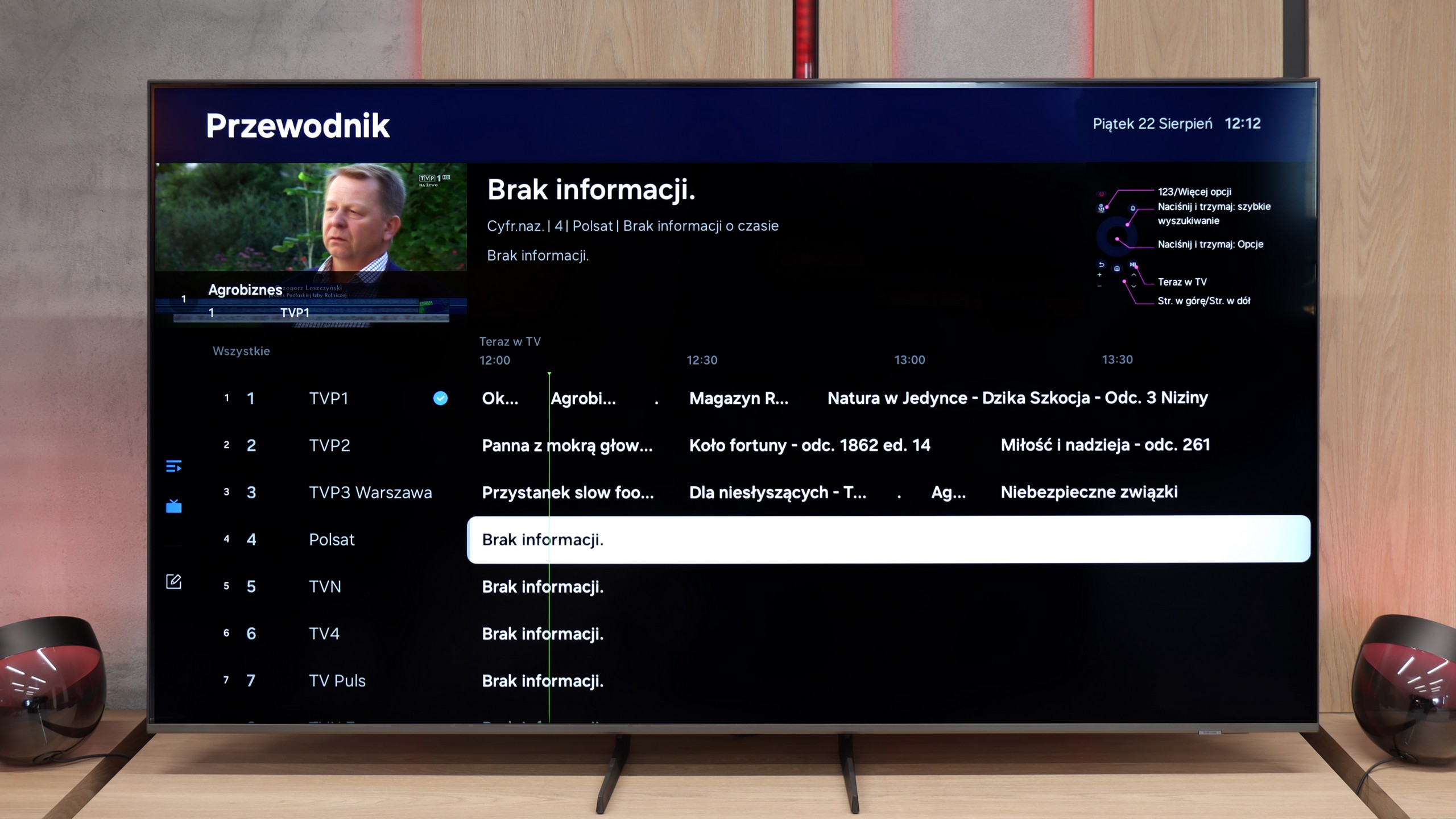
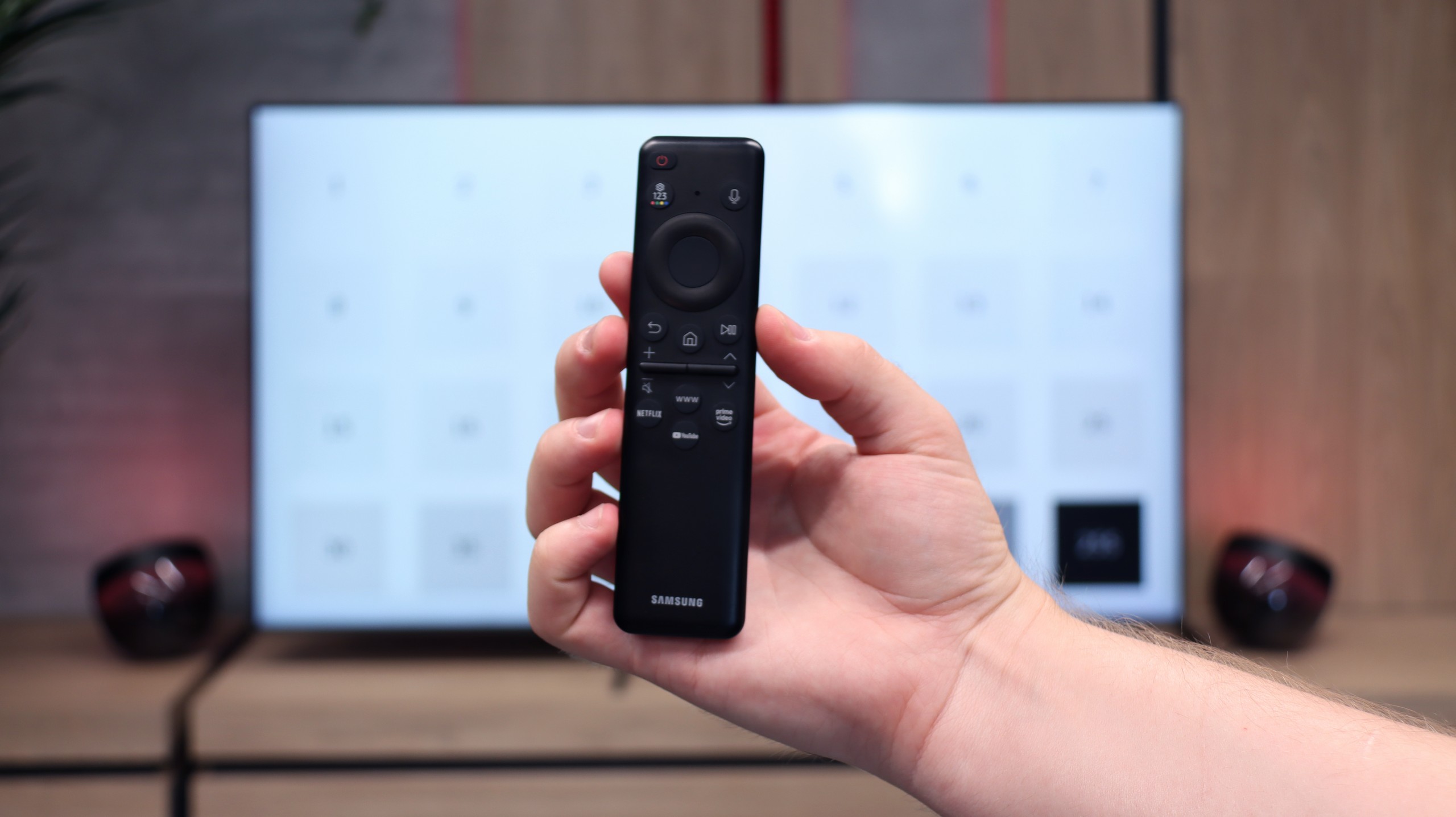
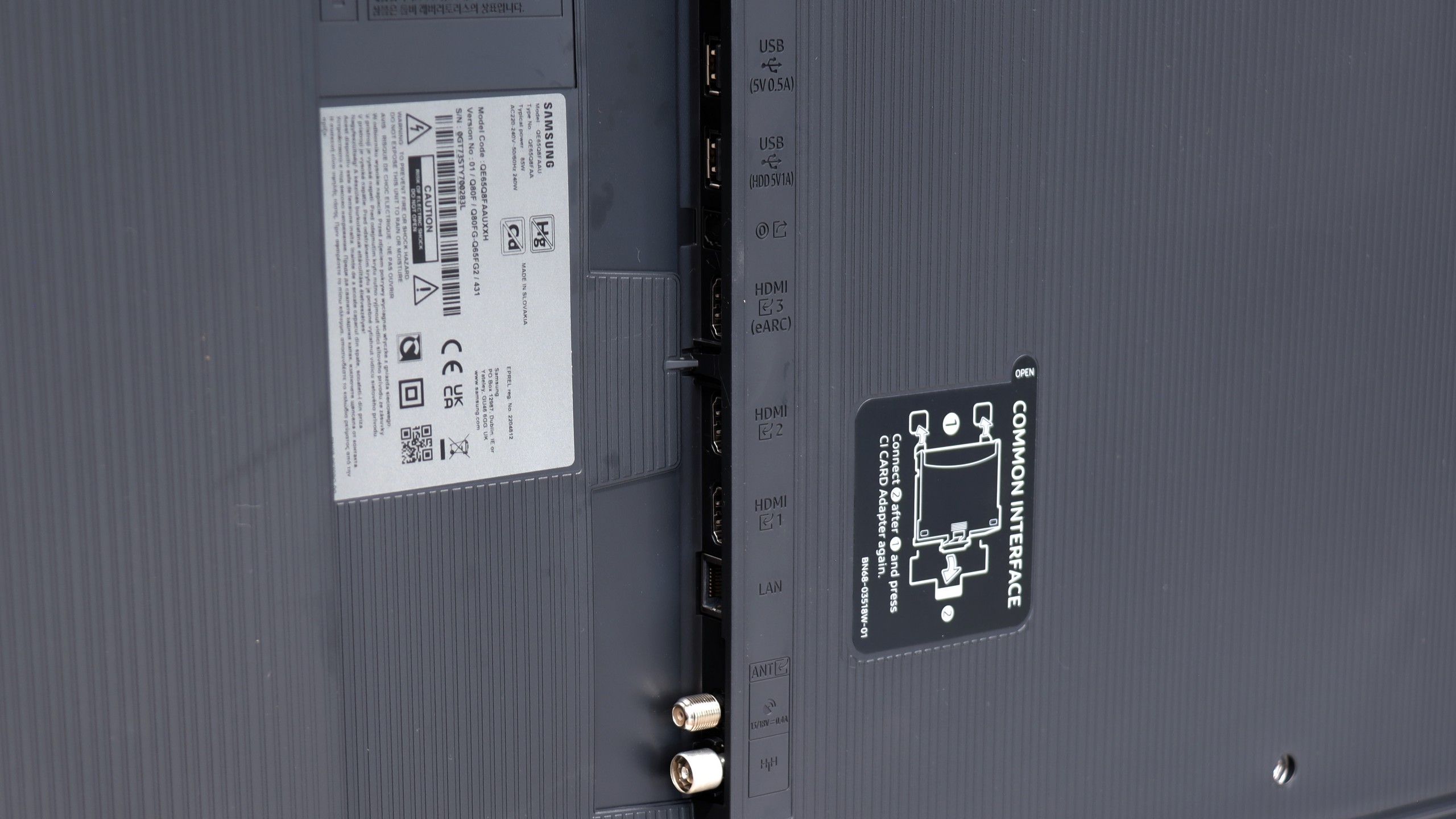
Smart TV – Tizen system
Here Q7F shows its strongest side. Samsung has been developing the Tizen system for years, and it is evident that we are dealing with a mature, refined platform. Everything works smoothly, the menu does not lag even when switching between heavier applications, and installing additional programs from the library is quick and hassle-free. Additionally, there is full support for AirPlay, integration with voice assistants, as well as a wide range of add-ons – from collaboration with devices in the SmartThings ecosystem to the ability to control Philips Hue smart lighting or other smart gadgets. Samsung strongly focuses on advanced network features, and it shows – in terms of Smart TV, Q7F has absolutely nothing to be ashamed of, and on the contrary, it can put more expensive competitor models to shame.
Classic Features
On the side of classic "TV" solutions, it is clear that the manufacturer has put everything on the smart card. We will not find USB recording or PiP mode here, features that used to be standard. It is evident that Q7F is primarily intended to be a media center, not a device for users accustomed to more traditional solutions. Fortunately, there are several practical additions – we have Bluetooth for pairing headphones or speakers and the option to change the font size in the menu, which will be appreciated by users with weaker eyesight.
SmartTV Features: Tizen
In terms of smart features, the Q8F is on par with what Samsung has accustomed us to. On board, we have the Tizen system – fast, intuitive, and well-integrated with other devices. AirPlay, screen mirroring, and simple voice commands work without issues, so the basics are perfectly covered. Additionally, there’s SmartThings, an app that turns the TV into the center of the home ecosystem. You can connect a washing machine, vacuum cleaner, bulbs, or speakers and control everything from one place, including the TV. There’s no shortage of apps within Tizen for watching movies or series either – Netflix, YouTube, Disney+, and Prime Video are readily available. However, it’s worth remembering that Tizen is a closed system, so anyone hoping to install less popular programs may be disappointed.
Classic Television
Classic television fares worse. The Q8F simply serves as a screen here – it will display the image, but we won’t find additional features like USB recording or PiP mode. The remote is small and minimalist. It looks modern, can be charged via solar batteries on the back cover, or through USB-C, but it's important to note that it may not appeal to everyone – especially older users may miss traditional buttons. However, it must be honestly admitted that Samsung has consistently directed its TVs (as well as competitors, who have copied some ideas from them) towards smart home integration, rather than equipment "for grandma and grandpa." Given the immense popularity of the brand, it can be assumed that most users, even older ones, have already grown accustomed to the fact that the era of remotes with a whole range of rubber buttons is slowly coming to an end.
Playing files from USB
9/10
9.1/10
Supported photo formats:
Maximum photo resolution:
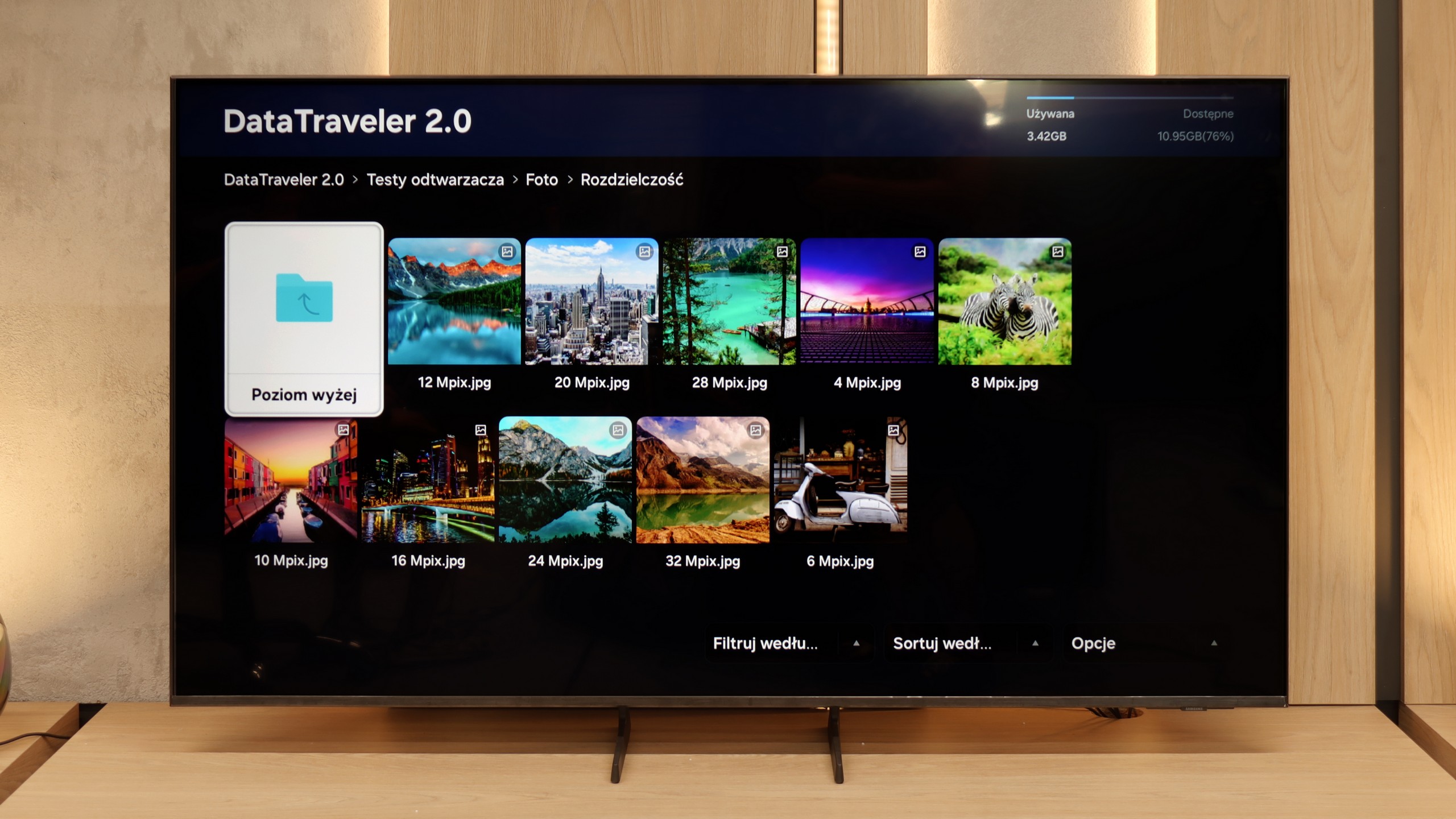
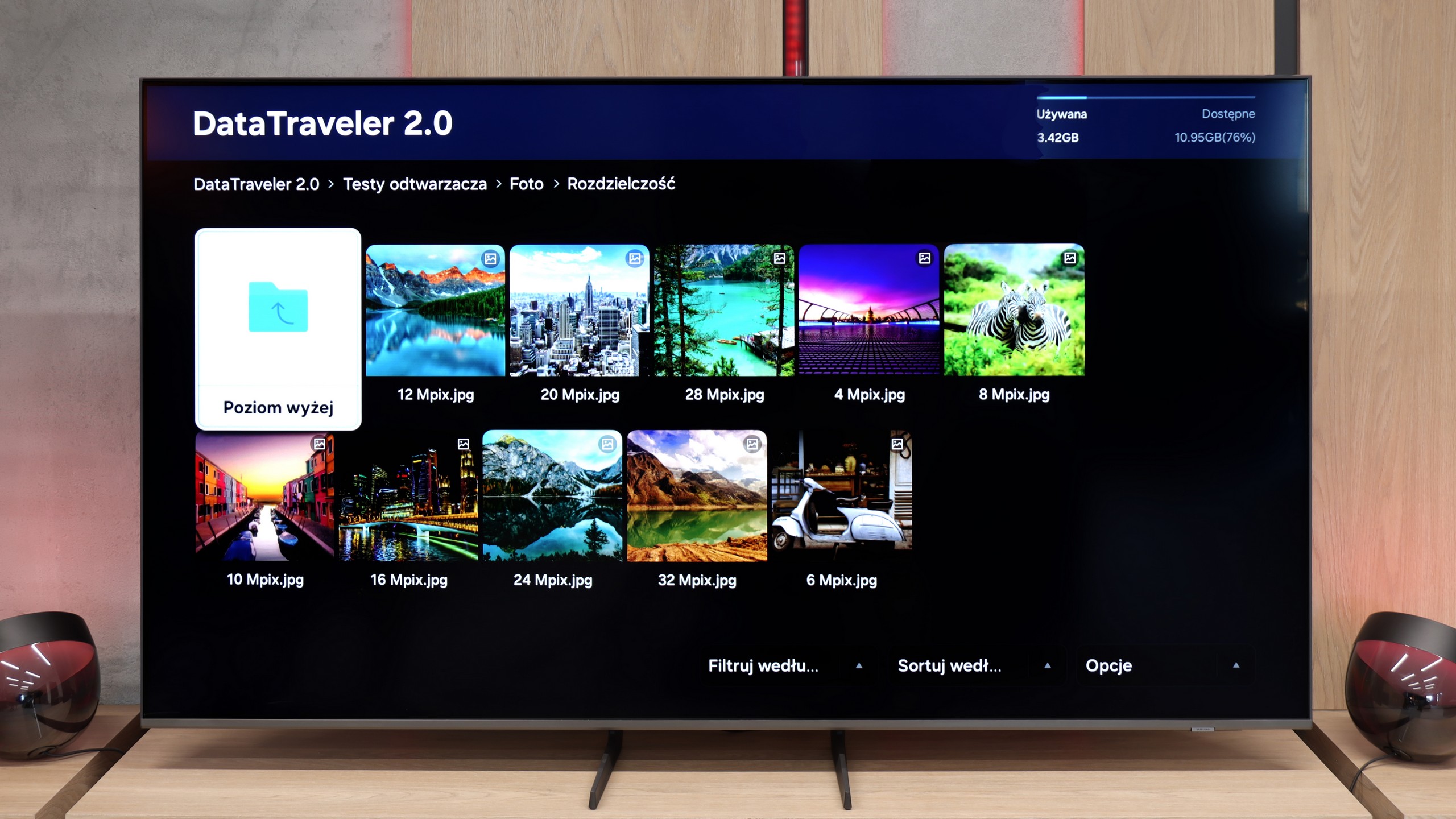
In the Q7F, we have a built-in file player, and as is usually the case with Samsung TVs, it works quite well – most popular movies or music play without any fuss. For basic use, it’s sufficient, and there’s usually no need to reach for external solutions like connecting a laptop. It’s worse if someone wants to upload photos – it can stumble here, especially with Apple’s HEIC or PNG, which are visible in the player menu but don’t necessarily want to work.
Samsung Q8F handles playback of files from USB quite efficiently. It supports almost all popular video formats and photos, so you can easily upload a holiday movie or a family album. There are occasional exceptions for less popular photo formats, but the most important JPEG works perfectly, which will be crucial for most users. It's just a shame that Tizen does not allow for the installation of alternative players like VLC. Then even less popular formats would not pose any problem.
Apps
8.7/10
8.7/10














































Sound
5.8/10
6/10
- Maximum volume80dB84dB
- Dolby Digital Plus 7.1
- Dolby True HD 7.1
- Dolby Atmos in Dolby Digital Plus (JOC)
- Dolby Atmos in Dolby True HD
- DTS:X in DTS-HD MA
- DTS-HD Master Audio
The Samsung Q7F comes with a 20 W speaker system and… well, there’s no point in sugarcoating it; it’s not really impressive. The TV itself sounds quite decent, meaning we can clearly hear series, news, or daily programs, and the dialogues are not lost, but there is a lot lacking in depth and sound space. There is practically no bass; something thuds, but it resembles more of a knock on a box than true low tones. Music sounds flat, and movies also don't make any significant impression – we won’t feel like we're in a cinema. It’s a sound in the category of “acceptable,” just enough to have something built-in, but if someone is counting on stronger experiences, they will sooner or later reach for a soundbar anyway. And to be honest – even the simplest model will make a significant difference here, and Samsung has quite a few of those in their offering.
The sound on the Q8F can be described as acceptable. You can hear a slightly defined bass, but it is really minimal – the slim design of the TV simply doesn't allow the pair of 2 × 10 W speakers to spread their wings. This is a typical scenario for most TVs: if someone cares about truly cinematic experiences, it's worth considering a soundbar. Samsung has a really wide range in this category across various budgets, so it's easy to find something suitable. The TV itself will work for watching traditional television and series from time to time, but you shouldn't expect much more in terms of sound excitement.
Acoustic Measurements
80dBC (Max)
75dBC
84dBC (Max)
75dBC
